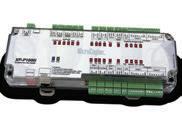
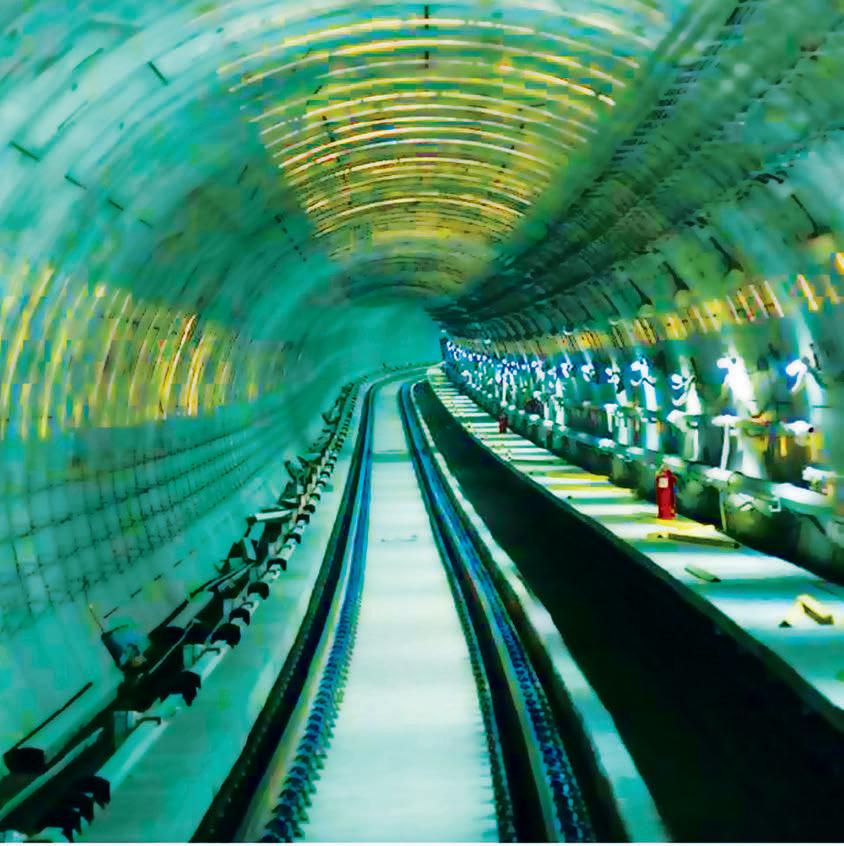




JURUTERA has an estimated readership of 168,000 professionals. Our esteemed readership consists of certified engineers, decision making corporate leaders, CEOs, government officials, project directors, entrepreneurs, project consultants, engineering consulting firms and companies involved with engineering products and services.
Our business partners can be assured that their products and services will be given the circulation and exposure it deserves, thus maintaining a sustained advertising presence to our core readers of decision-making engineers and technical experts. Our website offers an even wider market reach, with added international presence, aided by our international affiliation with official engineering bodies all over the world. Our online and offline advertising features such as banner advertising, article sponsorship and direct e-mail announcements have proven to be successful marketing strategies that will set the businesses of our partners apart from their competition.

For advertising enquiries, please contact:



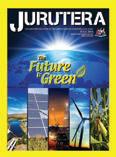




Xypex system solutions were recently provided to the Gallery, a Clifton Homes development located in the heart of Accra, Ghana. Xypex was specified to provide durability and protect the new residential complex based on past successful Xypex Systems. One of the key criteria to be met at design stage, was providing solutions where durability was factored into the design due to areas with extreme hydrostatic pressure.
In order to ensure long term protection and an extended service life for the key element of the structure, the 1,000m2 concrete slab, Xypex C-1000 NF, Concentrate, Modified and Patch’n Plug were used throughout the two levels below grade parking garage and the roof decks with swimming pools including underground water tank and planters.
For more information on how our solutions can provide sustainable benefits for your concrete assets, please visit our website at www.xypex.com.au or LinkedIn Page.

Number 06, JUNE 2017 IEM Registered on 1 May 1959
MAJLIS BAGI SESI 2017/2018 (IEM COUNCIL SESSION 2017/2018)
YANG DIPERTUA / PRESIDENT
Ir. Tan Yean Chin
TIMBALAN YANG DIPERTUA / DEPUTY PRESIDENT
Ir. David Lai Kong Phooi
NAIB YANG DIPERTUA / VICE PRESIDENTS
Ir. Prof. Dr Jeffrey Chiang Choong Luin, Ir. Assoc. Prof. Dr Norlida bt Buniyamin, Ir. Ellias Bin Saidin, Ir. Prof. Dr Ruslan bin Hassan, Ir. Lai Sze Ching, Ir. Lee Boon Chong, Ir. Ong Ching Loon
SETIAUSAHA KEHORMAT / HONORARY SECRETARY
Ir. Yap Soon Hoe
BENDAHARI KEHORMAT / HONORARY TREASURER
Dr Wang Hong Kok
BEKAS YANG DIPERTUA TERAKHIR / IMMEDIATE PAST PRESIDENT
Y.Bhg. Dato’ Ir. Lim Chow Hock
BEKAS YANG DIPERTUA / PAST PRESIDENTS
Y.Bhg. Academician Tan Sri Dato’ Ir. (Dr) Hj. Ahmad Zaidee bin Laidin, Y.Bhg. Dato’ Ir. Dr
Gue See Sew, Y.Bhg. Dato’ Paduka Ir. Keizrul bin Abdullah, Y.Bhg. Academician Dato’ Ir. Prof. Dr Chuah Hean Teik, Mr. Choo Kok Beng
WAKIL AWAM / CIVIL REPRESENTATIVE
Ir. Dr Lee Yun Fook
WAKIL MEKANIKAL / MECHANICAL REPRESENTATIVE
Ir. Fam Yew Hin
WAKIL ELEKTRIK / ELECTRICAL REPRESENTATIVE
Ir. Lim Kim Ten
WAKIL STRUKTUR / STRUCTURAL REPRESENTATIVE
Ir. Dr Ng Soon Ching
WAKIL KIMIA / CHEMICAL REPRESENTATIVE
Ir. Prof. Dr Thomas Choong Shean Yaw
WAKIL LAIN-LAIN DISPLIN / REPRESENTATIVE TO OTHER DISCIPLINES
Ir. Roznan bin Abdul Rashid
WAKIL MULTIMEDIA DAN ICT / ICT AND MULTIMEDIA REPRESENTATIVE
Ir. Dr Chuah Joon Huang
AHLI MAJLIS / COUNCIL MEMBERS
Ir. Mohd Khir bin Muhammad, Y.Bhg. Dato’ Ir. Hj. Hanapi Bin Mohammad Noor, Ir. Dr Ahmad Anuar bin Othman, Ir. Ishak bin Abdul Rahman, Ir. Chong Pick Eng (PE Chong), Ir. Ng Yong Kong, Ir. Tejinder Singh, Ir. Sreedaran a/l Raman, Ir. Roger Wong Chin Weng, Ir. Assoc. Prof. Dr Ahmad Kamil bin Arshad, Ir. Dr Tan Kuang Leong, Ir. Hoo Choon Sean, Y.Bhg. Lt. Jen. Dato’ Wira Ir. Ismail bin Samion (Ret. RMAF), Ir. Hj. Anuar bin Yahya, Ir. Mah Way Sheng, Ir. Gunasagaran a/l Kristnan, Ir. Chen Harn Shean, Ir. Mohd Aman bin Hj. Idris, Ir. Gopal Narian Kutty, Ir. Dr Jimmy Mok Vee Hoong, Ir. Dr Leong Wai Yie, Ir. Razmahwata Mohamad Razalli, Ir. Abdul Razak Yakob, Ir. Yau Chau Fong, Y.Bhg. Dato’ Ir. Foong Choy Chye, Y.Bhg. Dato’ Ir. Kisai bin Rahmat, Ir. Yam Teong Sian, Y. Bhg. Dato’ Ir. Low Keng Kok, Y. Bhg. Dato’ Ir. Hj. Abdul Rashid bin Maidin
PENGERUSI CAWANGAN / BRANCH CHAIRMAN
1. Pulau Pinang: Ir. Ting Chek Choon
2. Selatan: Ir. Mohd Khir Muhammad
3. Perak: Ir. Abdul Razak bin Ali
4. Kedah-Perlis: Ir. Prof. Dr Rezuwan bin Kamaruddin
5. Negeri Sembilan: Y. Bhg. Dato’ Ir. Zainurin bin Karman
6. Kelantan: Ir. Hj. Mohd Zaim bin Abd. Hamid
7. Terengganu: Ir. Atemin bin Sulong
8. Melaka: Ir. Dr Tan Chee Fai
9. Sarawak: Ir. Vincent Tang Chok Khing
10. Sabah: Ir. Hj. Yahiya bin Awang Kahar
11. Miri: Ir. Paul Chiew Lik Ing
12. Pahang: Y. Bhg. Dato’ Ir. Sharuddin bin Mohd Simin
AHLI JAWATANKUASA INFORMASI DAN PENERBITAN / STANDING COMMITTEE ON INFORMATION AND PUBLICATIONS 2017/2018
Pengerusi/Chairman: Ir. Prof. Dr Ruslan Hassan Naib Pengerusi/Vice Chairman: Ir. Mohd. Khir Muhammad Setiausaha/Secretary: Ir. Lau Tai Onn Ketua Pengarang/Chief Editor: Ir. Prof. Dr Ruslan Hassan Pengarang Buletin/Bulletin Editor: Ir. Mohd. Khir Muhammad Pengarang Prinsipal Jurnal/Principal Journal Editor: Ir. Prof. Dr Ruslan Hassan Pengerusi Perpustakaan/Library Chairman: Ir. C.M.M. Aboobucker Ahli-Ahli/Committee Members: Ir. Lee Boon Chong, Ir. Ong Guan Hock, Ir. Yee Thien Seng, Ir. CMM Aboobucker, Ir. Chin Mee Poon, Ir. Dr Oh Seong Por, Ir. Tejinder Singh, Ms. Michelle Lau Chui Chui, Ir. Abdul Razak bin Yakob
LEMBAGA PENGARANG/EDITORIAL BOARD 2017/2018
Ketua Pengarang/Chief Editor: Ir. Prof. Dr Ruslan Hassan Pengarang Buletin/Bulletin Editor: Ir. Mohd. Khir Muhammad Pengarang Jurnal/Journal Editor: Ir. Prof. Dr Ruslan Hassan Ahli-ahli/Committee Members: Ir. Lau Tai Onn, Ir. Ong Guan Hock, Ir. Yee Thien Seng, Ms. Michelle Lau Chui Chui, Dr Oh Seong Por Secretariats: Janet Lim, May Lee
THE INSTITUTION OF ENGINEERS, MALAYSIA
Bangunan Ingenieur, Lots 60 & 62, Jalan 52/4, P.O. Box 223, (Jalan Sultan), 46720 Petaling Jaya, Selangor Darul Ehsan.
Tel: 603-7968 4001/4002 Fax: 603-7957 7678 E-mail: sec@iem.org.my Homepage: http://www.myiem.org.my

NOTE Localising Tunnelling Talent
COVER STORY The Future is Underground
FEATURE ARTICLES
Localising Tunnelling Talent
Sustainability in Tunnelling & Underground Space in Malaysia .................................................12
Pahang-Selangor Raw Water Transfer Tunnel Project, Malaysia The Longest Raw Water Tunnel in Asia ...............19
Powering The Nation Through Young Generation The Ulu Jelai and Hulu Terengganu Hydroelectric Project .............................................23
TEA TIME Setting the Stage for Safe Behaviour
FORUMS
Aspiring to Organise World Tunnel Congress 2020 ...................................................28
Inspiring Young Talent in Sustainability of Tunnelling Industry in Malaysia ...........................32
Technical Visit to Cameron Highlands Sultan Idris (II) Woh Power Station ......................34
Technical Visit to Knowles Electronics (M) Sdn. Bhd., Penang ........................................37
Talk on Communication Skills for Business Applications .........................................................40
Carved Out of Solid Rock


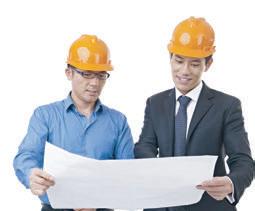

DIMENSION PUBLISHING SDN. BHD. (449732-T)
Level 18-01-03, PJX-HM Shah Tower, No. 16A, Persiaran Barat, 46050 Petaling Jaya, Selangor Darul Ehsan, Malaysia. Tel: +(603) 7493 1049 Fax: +(603) 7493 1047
E-mail: info@dimensionpublishing.com Website: www.dimensionpublishing.com
Chairman
ROBERT MEBRUER
CEO/Publisher
PATRICK LEUNG
General Manager
SHIRLEY THAM shirley@dimensionpublishing.com
Head of Marketing & Business Development
JOSEPH HOW joseph@dimensionpublishing.com
Editor
TAN BEE HONG bee@dimensionpublishing.com
Contributing Writers
PUTRI ZANINA & ZOE PHOON putri@dimensionpublishing.com zoe@dimensionpublishing.com
Senior Graphic Designer
SUMATHI MANOKARAN sumathi@dimensionpublishing.com
Graphic Designer
NABEELA AHMAD beela@dimensionpublishing.com
Advertising Consultants
THAM CHOON KIT ckit@dimensionpublishing.com
Accounts cum Admin Executive
YEN YIN yenyin@dimensionpublishing.com
For advertisement placements and subscriptions, please contact:
DIMENSION PUBLISHING SDN. BHD. (449732-T)
Level 18-01-03, PJX-HM Shah Tower, No.16A, Persiaran Barat, 46050 Petaling Jaya, Selangor Darul Ehsan, Malaysia. Tel: +(603) 7493 1049 Fax: +(603) 7493 1047
E-mail: info@dimensionpublishing.com
Subscription Department
E-mail: info@dimensionpublishing.com
Printed by
HOFFSET PRINTING SDN. BHD. (667106-V)
No. 1, Jalan TPK 1/6, Taman Perindustrian Kinrara, 47180 Puchong, Selangor Darul Ehsan, Malaysia. Mailer
PERFECT MAIL SERVICES (648839-P) 14 Jalan TSB 2, Taman Perindustrian Sungai Buloh, Sungai Buloh, Selangor Darul Ehsan, Malaysia. Tel: +(603) 6156 5288
JURUTERA MONTHLY CIRCULATION : 22,500 COPIES
Submission or placement of articles in JURUTERA could be made to the:Chief Editor
THE INSTITUTION OF ENGINEERS, MALAYSIA (IEM) Bangunan Ingenieur, Lots 60 & 62, Jalan 52/4, P.O. Box 223 (Jalan Sultan), 46720 Petaling Jaya, Selangor. Tel: +(603) 7968 4001/4002 Fax: +(603) 7957 7678 E-mail: pub@iem.org.my or sec@iem.org.my IEM Website: http://www.myiem.org.my
© 2017, The Institution of Engineers, Malaysia (IEM) and Dimension Publishing Sdn. Bhd.
PUBLICATION DISCLAIMER
The publication has been compiled by both IEM and Dimension with great care and they disclaim any duty to investigate any products, process, services, designs and the like which may be described in this publication. The appearance of any information in this publication does not necessarily constitute endorsement by IEM and Dimension. There is no guarantee that the information in this publication is free from errors. IEM and Dimension do not necessarily agree with the statement or the opinion expresssed in this publication.
COPYRIGHT
JURUTERA Bulletin of IEM is the official magazine of The Institution of Engineers, Malaysia (IEM) and is published by Dimension Publishing Sdn. Bhd. The Institution and the Publisher retain the copyright over all materials published in the magazine.
No part of this magazine may be reproduced and transmitted in any form or stored in any retrieval system of any nature without the prior written permission of IEM and the Publisher.

Iby Ir. Syed Rajah Hussain Shaib Bin A.H. Mohd. Haniff Chairman, Tunnelling and Underground Space Technical Division
did not choose tunnelling, it chose me . Except for another Malaysian student and me, the rest of my university mates were set for their second industrial training during their thirdyear studies.
By pure chance, the Managing Director of JF Donelon and Co, Mr. Mark Turner, invited the two of us to an interview and offered us a placement. My classmate opted for Wavertree, Liverpool, and I took Victoria Docks, London. That was my first experience in tunnelling. After graduating, I re-joined the company and went on to construct more tunnels in the United Kingdom.
There are two important lessons I have learnt. Firstly, that construction personnel are expandable and secondly, the difference between ‘work hard’ and ‘hard work’.
Tunnelling was alien to us then. It probably still is to most of today’s graduates. Why? Because tunnels are dangerous and not visible, they are not popular with civil engineers who prefer to look at more interesting structures such as buildings, bridges and highways.
The public too seldom appreciates the hard work, effort and knowledge that go into a successful tunnel project. Their interaction with tunnels will probably be taking an MRT ride or driving through one. Even then, the appreciation diminishes due to the claustrophobic effect. However, a road tunnel that cuts through a mountain usually impresses everyone.
With a growing population, there is a need to solve infrastructure issues. Tunnelling is being increasingly seen as a viable alternative and, with higher confidence and greater knowledge, tunnelling has expanded to various sectors such as transportation, power, sewerage and flood prevention.
With the increase in demand for tunnelling, we must ensure the industry is sustainable by having a larger pool of local tunnelling talent. Universiti Teknologi Malaysia (UTM) will be offering a Master Programme in Tunnelling and MRT Corp will collaborate with Universiti Teknologi Petronas (UTP) to provide access for post-graduate studies on its projects.
Agrowing population means an increasing demand for space, especially in big cities and often, the only practical option left, especially for transportation, is to build underground. In this respect, Malaysia has achieved huge successes with the SMART Tunnel and the LRT/MRT projects.

JURUTERA talks to three experts – Datuk Amiruddin Ma’aris, Project Director of SSP Line, Mohd Khanil bin Taib, Senior Manager Hulu Terengganu Hydroelectric Project and Prof. Dr Khairul Anuar Kassim, Dean of Faculty of Civil Engineering, Universiti Teknologi Malaysia – to find out more about the benefits of tunnelling.

Dato' Amiruddin Ma'aris Project Director, SSP Line MRT
Integrated seamless transportation claims to hold the key to unlocking the door to smarter urban connectivity. In this aspect, how will underground space be utilised to support a sustainable urban transport system and to maximise its efficiency? What are the key resources to achieve it?
The use of underground space for public transport in a very developed urban space is virtually a necessity. As the surface area of a city is usually densely built up, going underground is very often the only option available.
There are many benefits to going underground:
• It offers greater flexibility in alignment choice as there will be fewer constrains from surface conditions, enabling the MRT to reach locations in the city centre where there is good catchment.
• It ensures that MRT structures do not create obstructions for subsequent surface land use e.g. for development, roads etc.
• It enables coexistence with existing privately-owned land, which allows for efficient land usage and direct linkage with stations.
• It decreases the need for land acquisition, thus lessening social impact.
• It reduces the impact on surface environment, such as noise pollution, both during the construction stage as well as the operations stage.
Besides the structures for the MRT itself, underground space is also used for walkways and underpasses to provide seamless connectivity between the MRT and other urban rail systems. In the Klang Valley MRT Project, we have underground stations which will integrate with existing underground stations (the future Ampang Park MRT Station with the existing Ampang Park LRT Station), as well as underground stations with elevated stations (future Pasar Seni MRT Station with existing Pasar Seni LRT Station; future Maluri MRT Station with existing Maluri LRT Station).
Underground walkways are also built to link up with adjacent developments, such as the future Tun Razak Exchange Station with the neighbouring TRX development and the future Bukit Bintang MRT Station with neighbouring shopping complexes.
Underground walkways and underpasses enhance underground connectivity resulting in higher foot traffic, and provide a direct connection between an MRT Station and the adjacent building.
The main resource required to develop underground space is, of course, funding as the cost will be higher than building on the surface.
In addition, knowledge, skill, experience and technology are also key to ensure optimum utilisation of underground space, as these resources are needed from the conceptual and design stage to the execution and construction stage. Even after construction, and during the operations stage, such resources will be needed for proper maintenance and protection of the underground space.
Klang Valley Mass Rail Transit (KVMRT), one of the most important and largest transport infrastructure projects in Malaysia, will see the construction of three MRT lines. What significance does the project have in the nurturing of local talents towards sustainable development in the high technology and precision engineering engaged in tunnelling work which is usually dominated by foreign professionals?
The KVMRT Project has exploited every opportunity to ensure local participation and knowledge transfer to Malaysians in areas where foreign expertise is necessary. This is mostly in the area of electrical and mechanical system works, where local knowledge is still lacking.
As part of the procurement process, MRT Corp requires all Systems Work Packages for the MRT Sungai BulohSerdang-Putrajaya (SSP) Line to have at least 35% local participation. This is up from 30% set for the MRT Sungai Buloh-Kajang (SBK) Line. For the SSP Line, local participation also has to be in the form of a joint venture. There was no such requirement for the SBK Line.
The Industrial Collaboration Programme (ICP) has also been implemented for the KVMRT Project, whereby foreign contractors or original equipment manufacturers are required to provide benefits in terms of technology transfer, international market access for local suppliers, direct or indirect investments in Malaysia and others, as part of their contractual obligation. The ICP for the KVMRT Project is designed to support and enhance the Malaysian railway industry.
Among the beneficiaries of this programme are universities, which have been gathering data and technical know-how from the foreign contractors. The Tunnelling Training Academy, which trains locals for tunnelling work, is another outcome of the ICP. It produces a steady stream of specialists, technicians and skilled manpower to support the roll-out of the underground works for the KVMRT project, as well as in other parts of the world.
Aside from transferring skills and knowledge through an academy, local businesses have also benefitted from the offset programme. One of the beneficiaries was SPC Industries Sdn. Bhd., specialised precast concrete product manufacturer which produced the Segmental Box Girders (SBGs) for the SBK Line. SPC worked together with MMCGamuda to gain the technology and knowledge from foreign companies, as well as in R&D to produce the right mix for the final product.
Toyomi (M) Sdn. Bhd. was another beneficiary that benefitted from the offset programme. It was tasked with manufacturing and supplying the Automated Fare
Collection (AFC) gates for the SBK Line. Having acquired the know-how on automation and integrating software with hardware, as opposed to only focusing on hardware previously, Toyomi has certainly moved up the value chain.
The Industrial Collaboration Programme has certainly benefitted many local companies as, through their participation in the KVMRT Project, they have grown significantly in terms of technology, skills and knowledge.
Let us look at other developed city closer to us: Singapore, where the MRT and underground are well blended within the island city. More lines are being planned and these will be fully built underground. In your opinion, can this concept be adopted here? If so, what are MRT’s plans to ensure the continuity of the concept through developing local talent?
The decision to make part of the alignment underground for the Klang Valley MRT Project is due to several factors.
Against all the benefits of going underground, there is the cost issue. In Kuala Lumpur, the Karstic Limestone geological condition makes tunnelling not impossible, but very challenging and expensive.
So when designing the lines of the KVMRT Project, the optimum split between the lengths of the underground and elevated sections had to be determined.
Having said that, for future lines proposed, there will be less and less surface land available for MRT construction unless there is massive land acquisition and demolition. Such a situation may force more lines to go underground.
As for ensuring continuity in local talent, it was mentioned that through the ICP, the Tunnelling Training Academy was created to nurture talent which would be deployed later to work on the KVMRT Project as well as other tunnelling projects.
Besides training talent for direct underground works, the ICP has also enabled knowledge transfer to enable Tunnel Boring Machines to be refurbished locally. The ICP beneficiary, a company near lpoh, is currently refurbishing 8 TBMs which were used for the SBK Line. These will be used for the SSP Line. This plant is the first in Southeast Asia with such skills and capabilities.
Sustainability was once believed to be the job of the environmentalist or perhaps something that got in the way of good engineering. One may argue that many tunnelling projects are inherently sustainable. How do you suggest improving sustainability within the constraints of the tunnelling industry to minimise the environmental footprint of tunnels at all stages?
Tunnelling reduces impact on the surface environment, both during construction and during operations (postconstruction) by reducing noise pollution and minimising the use of greenfield land (underground stations often use road space, while portals and other structure tend to use brown field/used land).
The underground works contractor for the SBK Line, which is also handling underground works for the SSP Line, adopts environmentally-friendly practices during the construction stage. Water and bentonite used for tunnelling is recycled while waste water is treated before it is released from the site. The debris from the excavation can also be used for filling land as well as construction purposes.
The Tunnelling Industry is gaining popularity, mainly through the MRT projects. How can experienced local talents assist? For instance, Universiti Teknologi Malaysia, which has started a Master In Tunnelling course, wants to collaborate with tunnelling practitioners such as MRT. How do you think MRT can contribute?
Some of the beneficiaries of the ICP are universities which have been conducting research and collecting data throughout the duration of the construction of the SBK line. We believe the same will be happening for the SSP Line.
Among the universities which have benefitted from the Industrial Collaboration Programme under SBK Line are Universiti Tun Hussein Onn Malaysia (UTHM), Universiti Sains Malaysia (USM), Universiti Tenaga Nasional (UNITEN), and Universiti Kuala Lumpur (UniKL), with programmes on trackwork, signalling and power. Mitsubishi Heavy Industries (MHI) also built a test track for UniKL.
Under the SSP Line, the KVMRT Project would like to expand its reach to students of Universiti Teknologi Petronas with RM1 million in research funds and RM2 million in scholarships to send students to universities abroad to further pursue studies relevant to tunnelling.
These, we believe, will greatly help in the knowledge gaining process for local institutes of higher learning, in terms of underground works and tunnelling.
With more tunnelling projects in store, not only for the KVMRT Project but also other infrastructure projects, we believe there will be endless opportunities for collaboration.

Senior Manager (Hydro Structure), COE Energy Venture Division
The Hulu Terengganu Hydroelectric Project (HTHEP) involves the construction of 2 hydro power stations deep in forest reserve of Hulu Terengganu, namely Tembat Power Station and Puah Power Station. Both stations are located in the
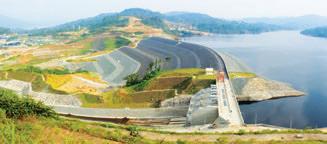


upstream side of the existing Kenyir Reservoir. The Tembat Station is a conventional surface power station while the Puah Power Station is an underground power station.
The main features of Tembat Power Station are the Tembat Dam, Intake structure, a 1,290m-long water transfer tunnel, a surface Power House equipped with 2 x 7.5 MW Francis horizontal turbines and a 1,183m-long “D” shape 5.5m-diameter Operation and Maintenance access tunnel.
The Puah Power station consists of an 77m-high earth-filled dam, an intake structure with two hydraulic gates serving two turbine generators, a Spillway complete with 3 radial gates (hydraulically operated), an underground power station cavern (transformer hall, 30x12m), machine hall (80x20m), a 1,175m-long tail-race tunnel and downstream surge chamber (65x14m), a 511m-long 7.5m diameter main tunnel and a 264m-long, 4.0m diameter ECV Tunnel.
Can you elaborate on the technical aspects of the tunnel systems (diversion tunnel and main access tunnel) used in the HTHEP project?
Diversion tunnels are required to divert the river flow away from the main worksite before we can work on or carry out construction activities.
Two diversion tunnels were available during construction of Puah Power Station facilities. Both were provided
with bulkhead gates to enable closure for the start of impoundment.
What technology was used for tunnelling during the construction phase?
The conventional “drill and blast” technique was used for all tunnels in both Puah and Tembat Stations. No TBMs were used.
There were challenges along the way and we introduced reinforcement/steel ribs to strengthen the weak sections. Other known techniques used included tunnel lining (steel lining, concrete lining, wire mesh, grouting and a combination of steel ribbing and shotcreting etc.
Can you share some of the challenges that the project team faced during the project implementation phase?
There were many unforeseen conditions encountered during the tunnel excavation phase, especially when dealing with mixed ground and water.
We spent a lot of time, effort and cost on Soil Investigation, hoping to get a good profile of the riverbed but there were many surprises which we discovered along the way and these required our immediate attention and action to ensure the dam was constructed on a good, rock-solid foundation.
The Puah Dam embankment activities were delayed for some time due to several reasons. Excavation had to be carried out further and deeper down to reach the riverbed rock bottom (5m deeper) for treatment of the river bed –cleaning of the alluvium, “dental treatment” of fresh rock etc. – to be carried out before dam embankment could start.
Other challenges included a few more incidents of “soft ground experience” encountered along the Puah TRT (trailrace tunnel) and the Tembat Water Transfer Tunnel during construction. In general, steel ribbing was applied and used to strengthen the weak sections.
How did Tenaga Nasional Berhad consider sustainable development during the planning stages of the project?
Sustainable development is defined as “development that meets the needs of the present without compromising the ability of future generations to meet their own needs”.
In other words, it is all about finding a balance between economic growth and protection of environmental quality.
It should be noted that TNB-HTHEP had entered into contracts with various entities to ensure a balance between enjoying the benefits of the power generated from the newly-developed hydro potential and the protection of the environmental quality:
TNB-HTHEP engaged UKM Pakarunding to look into the social-economic impact of the project; this was done very early during the feasibility study phase.
It engaged ASPECT Sdn. Bhd. to carry out a Detailed Environmental Impact Assessment (DEIA) study which was
included in the EMP (Environmental Management Plan) that was submitted to and endorsed by the DOE.
It also engaged an independent environmental auditor, Gunung Ganang (GG) Sdn. Bhd., (to be the eyes and ears of DOE) to ensure the Environmental Management Plan submitted to DOE was followed through accordingly as planned and reported to DOE. Six independent environmental audits were conducted during the project execution period. We are proud to record here that both GG and DOE are impressed with what TNB-HTHEP has implemented to ensure compliance with DEIA conditions, as well as the many other activities carried out to help preserve the environmental quality.
We can refer to the recorded testimonial by DOE Director Datuk Halimah Hassan during her visit to HTHEP site.
In addition to the above, TNB-HTHEP also entered into an agreement with TNB Research to implement environmental quality monitoring and preservation during the execution of the HTHEP project. These include:
• Environmental monitoring during the project execution
• Wildlife Search & Rescue including rehabilitation
• Study on the impact of H2S and methane gas to TNB power station.
Regular reports of Erosion Sedimentation Control Plan (ESCP), scheduled waste disposal, dust control and noise
• 2 x Headrace Tunnels
• Main Access Tunnel
• ECVT
• Transformer Cavern
• Power Station Cavern
• Surge Chamber Cavern
• Tailrace Tunnel
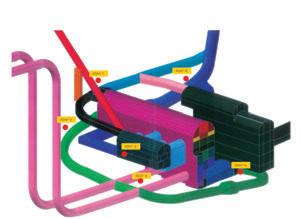

level during construction, workers’ health and disease monitoring at site were regularly submitted to the relevant authorities in compliance with the approved DEIA.
Other interesting initiatives that have been successfully carried out by TNB Research under HTHEP include:
• A study on elephant movement during and after the project execution (5 elephants were collared and monitored using satellite live monitoring).
• Establishment of a kelah (fish) sanctuary upstream of Terengganu River.
• Search & Rescue of large mammals during the Puah and Tembat reservoir impoundment in addition to “tembakhalau” activities to encourage large mammals to run to higher ground before flooding.
• The outcome of the research and studies carried out were shared with the public through several seminars held in the country.
All in, TNB-HTHEP spent no less than RM20 million in the form of environment-related contracts and direct CSR (Corporate Social Responsibility) contributions to the local population to balance the benefits enjoyed from the development of the hydro potential with the preservation of environmental quality and the social-economic impact on the locals.

Prof. Dr Khairul Anuar Kassim Dean, Faculty of Civil Engineering, Universiti Teknologi Malaysia
From the academic point of view, what are the mission and vision of the Faculty of Civil Engineering in making contributions to tunnelling and underground space development?
Based on the Civil Engineering discipline, the Faculty of Civil Engineering (FKA) is ranked at top 51-100 in the world and No.1 in Malaysia by the QS World University Ranking in 2016. The ranking shows how serious we are about working academically in line with the needs of the civil engineering sector.
Our vision is “to be recognised as a world class centre of academic and technological excellence” and our mission is “to be a leader in the development of human capital and innovative technologies that will contribute to the nation’s wealth creation”.
The vision and mission are the inspiration, the dream, the operational framework, the direction and the statement of purpose for our educational community.
As for tunnelling and underground space, we have to work in line with the nation’s needs. The government is doing its best to provide the underground infrastructure (in the Klang Valley). Therefore, we, as an institution of higher education, must equip our students with the knowledge to enter the industry.
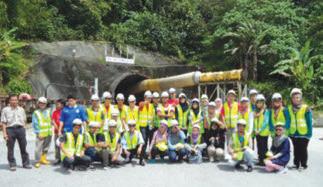
How did the faculty introduce tunnelling and underground space as an aspect of sustainable development?
It is becoming crowded on the surface, so we have to make use of underground space. At the same time, this can help preserve existing green on the surface. The knowledge of underground space development (including tunnelling) must be taught at university level to provide personnel with technical know-how in this area.
The Faculty of Civil Engineering has introduced underground space knowledge from as early as undergraduate level and in the final year project. Previously, the tunnelling syllabus was covered under the Rock Engineering and Construction Technology courses.
Each semester, we will arrange a field trip to a tunnel site, such as the Pahang-Selangor Raw Water Transfer Tunnel, the MRT Tunnel in Cochrane Station and the Tunnelling Training Academy. These visits expose students to real tunnelling work, in relation to what they have learnt in class.
Recently, students attended a 2-day short course in Principle for Tunnel Design which was organised by the IEM and endorsed by the ITA.
A high enrolment of students for these two courses and support from IEM’s Tunnel & Underground Space Technical Division (TUSTD), have led to first Tunnel Engineering Course in Malaysia.
This will allow more syllabuses to be covered under one specific tunnelling course. The Tunnelling Engineering course covers the elements of tunnelling and underground space and its relation to current development, especially the construction of MRT SBK and SSP lines and future projects such as the MRT Line 3, Malaysia East Coast Rail Line and Malaysia underground city.
It is hoped that this will create greater interest in and awareness of the importance of this subject for future development.
In future, we are planning to offer Master of Engineering in Tunnelling, with the support of the industry particularly from TUSTD, IEM.
Do the collaboration works (teaching and research) that you have undertaken so far, relate to the local tunnelling industry in any way?

For Master Geotechnics, we have introduced the Tunnelling Engineering course with the collaboration of industries for team teaching and as invited industrial speakers. The speakers are from TUSTD and experts from the industry in Malaysia. Our post-graduate students also carry out research with regards to tunnelling, including:
1. MTD ACPI – research on Performance of Precast Jointed Tunnel Lining
2. Pahang-Selangor Raw Water Transfer Tunnel Project on the fore-polling design guideline
3. MRT Line 1: Settlement and ground loss in Kenny Hill formation.
What is your hope, in terms of networking/ knowledge sharing/collaboration with the tunnelling industry in the near future?
Of course we hope to have more collaborations with the industry. These can be in terms of:
• Scholarships grants, not only for undergraduates but also for research students.
• Industrial grants to enable our researchers to take part in studies related to tunnelling.
• Staff and student internships.
• Inviting industrial speakers to colloquiums to share their knowledge with the students.
• Team Teaching by industrial experts to enable knowledge transfer to students.
Has the faculty adopted strategies to maintain sustainable knowledge of tunnelling and underground space development for the younger generation?
I believe tunnelling in itself is already very attractive to students as it can be considered a new branch of civil engineering. In addition, field trips have attracted students and industrial talks have given a new approach to current methods of teaching.
However, to maintain and deliver sustainable knowledge in this area, some ideas can also be considered, such as introducing a tunnel seminar or exhibition and organising a tunnel competition for students.



Malaysia is experiencing steady growth, particularly in urban areas and her city skylines are progressively changing, with additional new structures above ground. As the population density increases, these cities need to be supported by improved infrastructure.
In a developed city, engineers will look at tunnelling as a solution to infrastructure demands. Tunnelling is gaining popularity as it is less intrusive. Tunnels are hidden beneath the city, so the city skylines remain uncluttered and pleasant.
Tunnelling is also increasingly favoured in Sewerage, Water Supply and Flood Management and engineers are moving away from the open-cut system towards a no-dig system or tunnelling.
City planners are aware of the benefits of road bypasses constructed below ground level and of having mass transit systems running under the city. Some may argue that an underground mass transit system is a nuisance especially for older folks but often, choices are limited due to different types of traffic sharing, i.e. mode of transport and land available.
To realise the objectives, we must be prepared at every level – technically, constructability and management – of the industry to propagate the knowledge and know-how of tunnelling.
The very first underground mass transit tunnel was for the Putra Kelana Jaya Line, constructed between 1996 and 1998. It was fully opened on 1 June, 1999.
The two main contractors were Hazama (Japan) and Hyundai (South Korea). Hazama had developed the Articulate Slurry Tunnel Boring Machine required for the short radius tunnel between Masjid Jamek and Kampung Baru. The contractor faced some problems, mainly because the size of the karstic limestone excavated was large and there was difficulty in pumping the slurry out.
The contractor also introduced aluminium reinforcement for the tunnel eyes for the first time in Malaysia but that too created problems to the cutter disc. Instead of being cut into pieces, the aluminium stretched and wrapped around the ripper teeth, causing considerable damage.

Lessons were learnt and, in the recent MRT project, a slurryfier was introduced in the TBM to reduce the size of the excavated limestone to enable efficient pumping. For the tunnel eyes, the aluminium reinforcement was replaced with fibreglass and this proved very successful.
For the Line Two section from Damai to Kampung Baru, Hyundai introduced the Open Shield Tunnel Boring Machine made by Howden of Glasgow which manufactured it for the Channel Tunnel Project.
The ground was mainly in the Kenny Hill formation, with low water inflow. This tunnel proved that the Open Shield TBM was suitable for the Kenny Hill formation. As expected, the advance rate was slower than a Full-Face Tunnel Boring machine but the Open Shield TBM was necessary to allow the operators access to cut off some of KLCC temporary ground anchors located in the alignment of the tunnel.
The project was a success, taking into consideration that the Amended National Land Code, which allowed underground plots of land to be evaluated and sold separately without affecting the ownership of the land above it, was not yet in force at that time. Part of the tunnel was below the River Klang alignment.
The project saw new local talent being mentored by the international contractors. The project introduced new
Publisher:
Explore our full set of Professional and Integrated PUBLISHING MANAGEMENT SERVICES:
» Project Management
» Creative Management
» Ad Space Management
» Mailing Management
» Print Management
• Annual Reports
• Booklets • Brochures
• Buntings • Business Cards
• CD / DVD Replications
• Calendars • Cards & Invitations
• Certificates • Custom Printings
• Envelopes • Folders
• NCR Bill Books • Notepads
• Leaflets • Letterheads
• Paper Bags • Posters
• Stickers • Others
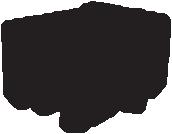



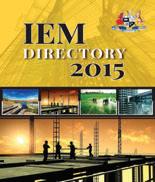






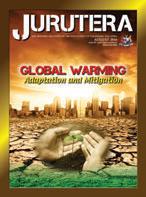













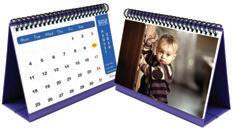















Dimension Publishing Sdn Bhd (449732-T) Level 18-01-03, PJX-HM Shah Tower, No. 16A, Persiaran Barat, 46050 Petaling Jaya, Selangor Darul Ehsan, Malaysia. Tel: +603 7493 1049 Fax: +603 7493 1047 E-mail: info@dimensionpublishing.com Shirley Tham : +6016 283 3013Joseph How : +6011 1234 8181




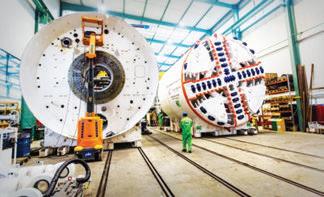
tunnelling methods, especially the introduction of larger scale Tunnel Boring Machines. The project saw many local participants, from TBM drivers and tunnel support staff to engineers and managers.
Support industries, including segment suppliers and smaller tunnel companies, started to grow and establish themselves.
The SMART Tunnel project saw the participation of a new group of tunnelling personnel while most of the local talent trained during the LRT project, proved to be valuable, experienced assets.
The SMART Tunnel was iconic, not only for its size but also because of its dual purpose. It was one of the first of its kind and international engineers had been studying it to apply the same concept elsewhere.
After the launch of the Mass Railway Transit Line 1, Kuala Lumpur, the tunnelling industry suffered further paroxysms. For the Sungai Buloh-Kajang Line, the portion running through the city centre was constructed below ground with a purpose-built TBM ordered from Herrenknecth.
As there were over 90 sink holes experienced during the construction of the SMART tunnel, MMC-Gamuda had to find a solution to mitigate the problem. The tunnel passes through the Kuala Lumpur Karstic Limestone which is notorious for cavities.
Tunnelling through cavities has its own unique problems as large settlements and sink holes occur when the balancing stability of the soil is disturbed.
So MMC-Gamuda and Herrenknetch developed the Variable Density Tunnel Boring Machine which won them the prestigious Tunnel Boring Machine Innovation Award in Singapore this year, another award clinched by a Malaysian project.
The Variable Density Tunnel Boring Machine was designed with the Kuala Lumpur Karstic Limestone strata in mind. It revolutionised the tunnelling experience and placed Malaysia on the map as an innovative nation.
Of course, this would not have materialised without the expertise from Germany and other international tunnelling experts. The VD TBM provided a valuable understanding and experience on the behaviour of excavation in the karstic limestone that the city of Kuala Lumpur was built on.
On 14 May, 2016, MRT Corp. Design Director Er. Poh Seng Tiok gave a lecture on Innovation in Ground Survey for Mass Railway Transit 2
The lecture further explored the latest innovations in ground survey adopted for the Mass Railway Transit 2 project. Lessons learnt from previous projects and understanding of local ground conditions required developing local skills and expertise. It involved sensitive instrumentation handling, execution of survey and interpretation of the results. The results were very important as these would decide the risk and excavation parameters and lastly, the tunnelling methodology. All safety, environment and contractual risks were to be determined.
Geological interface between Granite/ Kenny Hill/Limestone

Deep slump zone in Limestone
Arbitary interface between Kenny Hill and Limestone
Portal SENTUL WEST STATION
STATION GENERAL HOSPITAL NORTH STATION
KAMPUNG BARU NORTH STATION
AMPANG PARK STATION
KLCC EAST STATION
CONLAY STATION

Geological interface between Kenny Hill and Limestone
CHAN SOW LIN STATION
BANDAR MALAYSIA NORTH STATION
BANDAR MALAYSIA SOUTH STATION
line
Formation
The MRT 2 Line faced even more challenging soil conditions with greater areas of Karstic Limestone and the Kenny Hill Formation. The challenges were exaggerated with a number of fault zones along the tunnel alignment proposal. Er. Poh listed some of the main ground investigation works for MRT 2 in his lecture.





1. Ground Investigation Works (Borehole Drilling)
• Vertical, Inclined or Horizontal.
• Use of borehole televiewer, either optical or acoustic.
2. Geophysical Investigation
• Acoustic Tomography.
• Surface Seismic.
• Rayleigh Surface Wave Survey.
• Cross Hole Tomography.
• Electric Resistivity Tomography.
Er. Poh explained that, in an urbanised environment, Refraction Seismic and Electrical Imaging could give inaccurate and sometimes misleading results.
The innovation for MRT 2 soil investigation had moved to the next level of Gravity Survey. What is Gravity Survey? It measures changes in Gravitational Field caused by local variation of Soil & Rock Density. Gravitational Survey was chosen for the following reasons:
• It can map variable/highly undulated rockhead provided the density contrast at rock head is sufficient.
• It is largely unaffected by urban conditions under normal circumstances.
• It can be done inside buildings and in areas where electric cables, metal fences and conductors limit the use of the Electrical Imaging method.
• In a city environment, it is much easier to operate than MASW and EI.

A clear linear depression across the survey area – tie-in with the potential Regional Fault Alignment.
Moving forward, Er. Poh suggested using the horizontal directional drilling coring method to explore further the technology of ground investigation.
Further to the above, Our very own Associate Professor Ir. Dr Hisham Mohamad of University Technology Petronas (UTP) has presented a lecture on “Advancement of Tunnel lining Monitoring Using Fibre Optic Distributed Sensing” through his work and research at University of Cambridge United Kingdom.

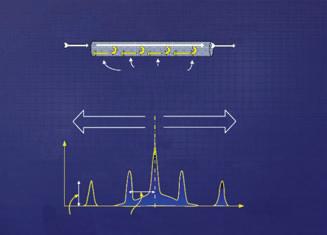

He presented a revolutionised sensing method using fibreglass deformation attached to the test sample. The technology provided real time data on tunnel activity effects, vital for monitoring ground and tunnel lining movement and the effect on the surrounding areas.
The Brillouin Optical Time Domain Reflectometry (BOTDR) used changes in light frequency caused in a strain fibre glass to measure the amount of deformation within the fibre glass attached to the test sample.
For healthy sustainability in the tunnelling industry, local talents will have to be trained to maintain the plant and machineries essential to tunnelling projects.
MMC-Gamuda has set up a RM100 million TBM refurbishment centre in Pusing, Perak, to refurbish 8 of the 10 TBMs used for the MRT Line 1 project. The centre employs local welders, supervisors and other skilled







workers associated with TBM maintenance work, under the supervision of personnel from TBM manufacturer Herrenknetch. The employees are engaged from MMCGamuda Tunnel Training Academy based in Bukit Kemuning Selangor.
The Refurbishment Centre is expected to produce local workers for the advancement of the tunnelling industry and to act as a catalyst for the development of other related works in the country.
Make sure you join us as we cover every aspect of the power generation industry with more than 8,000 industry professionals from around the world. Benefit from a world-class event packed with technical tours, panel discussions, workshops, business matchmaking, three exhibition days with over 200 international exhibitors and multiple networking events, all under one roof, PLUS more than 50 conference sessions covering themes such as:
Asia Power Week is the leading force in delivering a platform to meet, share, inform and learn about the latest advances in thinking and in technology for the Asian power industry. Register by 18 August to SAVE with the Early Bird at www.asiapowerweek.com



Tunnelling & Underground Division and IEM Training Centre (IEMTC) are actively working to expose the younger generation to the industry. They are looking to host the World Tunnelling Conference in 2020. As the marque of the tunnelling industry, WTC 2020 will firmly place Malaysia in the International Tunnelling spotlight.
TUSD and IEMTC have been sending young engineers to tunnelling conferences abroad, including to Singapore, Dubai, Myanmar and Croatia. The objective is to expose these talents to the International Tunnelling society and to promote Malaysia as a developing country that’s keen to pursue tunnelling as a sustainable future industry for our local talent.
Authors' Biodata
Ir. Syed Rajah Hussain, is currently the Chairman of Tunnelling and Underground Space Technical Division (TUSTD).
Dr Rini Asnida Abdullah, is a Senior Lecturer at Department of Geotechnics and Transportation, Faculty of Civil Engineering, Universiti Teknologi Malaysia (UTM). She obtained her Bachelor and Master degree in Geotechnics from UTM and received her Ph.D degree in Rock Mechanics from University of Leeds, United Kingdom in 2012. She is currently a Secretary-General of the ISRM Malaysia National Group and Technical Committee of Tunneling and Underground Space Technical Division (TUSTD) of The Institution of Engineers Malaysia (IEM).
Ir. Frankie Cheah, is a Register Professional Engineer of Malaysia. He is currently working as a geotechnical engineer. He obtained his Bachelor Degree in Civil Engineering obtained his Master Degree in Geotechnical Engineering. He is currently the Technical Committee of Tunneling and Underground Space Technical Division (TUSTD) of The Institution of Engineers Malaysia (IEM).

The Pahang Selangor Raw Water Transfer Tunnel (PSRWT) project is a massive project undertaken by Kementerian Tenaga, Teknologi Hijau dan Air (KeTTHA) to convey 1,890 million litres of raw water daily from the Semantan River in Pahang to the south Klang Valley region of Selangor, Kuala Lumpur and Putrajaya to meet demands up to 2025.
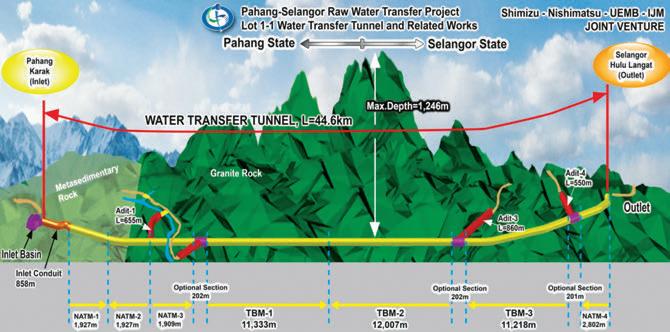
Completed in May 2014, PSRWT comprises three tunnels totalling 44.6km. It is, by far, the longest raw water tunnel in Asia and the 11th longest in the world. The tunnel will transfer 27.6 cubic metres of raw water per second to the new Langat 2 Water Treatment Plant (L2WTP) in Hulu Langat, which is being constructed and which will address the projected water demands from the ever-increasing population in these regions.
Costing an estimated RM3.74 billion, L2WTP will have a system of downstream distribution networks (under Phase 1) and the capacity to produce 1,130 million litres of portable water daily.
The PSRWT project was awarded to two Japanese contractors – Shimizu Corporation and Nishimatsu – which formed a joint-venture with local contractors UEM Builders and IJM (SNUI JV). The project was financed with a loan provided under the Japanese Official Development Assistance (ODA) programme.
The main components of the RM3.9 billion PSRWT project, including a raw water transfer tunnel, are:
• A 35m-high Kelau Dam with an effective capacity of 299 million cubic metres.
• Intake facility at Semantan.
• Ancillaries to the project consisting of a pumping station, twin pipelines, access roads and a telemetry system. Raw water will be conveyed into the PSRWT tunnel via a 858m-long inlet conduit structure with the help of a pumping station in the Pahang River Basin. The raw water will then flow 44.6km to the outlet structures in Selangor before it is transferred to the L2WTP for treatment.
The raw water tunnel crosses six fault zones (Karak, Krau, Bukit Tinggi, Lepoh, Kongkoi and Tekali), 17 lineaments and two rivers (Kelau and Karak). The geology strata encountered



in the initial stages of tunnelling advance consisted of hard, abrasive granitic rock of 17-176 MPa Unconfined Compressive Strength (UCS), with a mean of 77 MPa. The rock classification was based on that of the Japan Highway Public Corporation.
Depending on the conditions, the walls of the tunnel were supported by ring beams, rock bolts and shotcrete. When ground conditions were unstable, invert thrust systems were used to prevent the TBM from gripping against the tunnel walls.

To ensure that the high performance TBM could successfully cut into hard rock, it was fitted with 482mm back-loading disc cutters, the smallest diameter back-loading cutter-heads ever used. The cutter-heads were diligently monitored during each operation for wear and tear, using remote monitoring systems. These monitoring systems enabled the tunnelling crew to decide on cutter-head changes and to keep track of wear by recording several changes on each cutter-head, which included cutter-head rotation (recorded in percentage wear), temperature and vibration.
Each 482mm face and gauge cutter-head was equipped with a sensor secured inside the cutter-head housing and this permitted the sending of the raw data to a computer program display unit in the operator’s cabin.
The SNUI JV chose three Robbins 5.23m diameter Main Beam TBMs to tunnel through three sections. The total supply included back-up systems, continuous conveyors, cutter-heads, spares and underground field service personnel.
The 44.6km-long, 5.23m-diameter tunnel was excavated under challenging conditions with high overburden, ranging from 20m to 1,200m below the Titiwangsa mountain range and hot springs which had the capacity to discharge 28 cubic metres of spring water per second.


EV Connection is a prominent expert in Electric Vehicle (EV) and Plug-in Hybrid Electric Vehicle (PHEV) charging. We are one of the pioneers in providing electric vehicle charging services in Malaysia.
Our Products & Services include:
Supply & Install EV charging stations for residential homes, condominium, o ces, hotels, shopping malls and etc.
Supply EV charging cables and accessories for Electric Vehicle & Plug-in Hybrid Electric Vehicle.
In conformity with the requirements of standard MS IEC 61851-1:2013 and MS IEC 61851-22:2013.
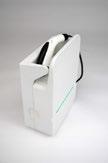

*Applicable for GBI Certification under Innovation Category



Type 1Type 2Type 3
EV Connection Sdn Bhd B716, Block B, 7th Floor, Kelana Square, No. 17, Jalan SS7/26, Kelana Jaya, 47301, Petaling Jaya, Selangor. Tel: 03-7887 2912 Fax: 03-7806 2677
Website: www.evconnection.com.my
E-mail: support@evconnection.com.my
Salesperson: Kevin Lim (017-453 7750) Mr. Lee (017-255 9777)

Tunnelling works using TBMs were carried out for 35km, while the remaining length and adits were excavated using either conventional drilling-andblasting or cut-and-cover. The upper and lower ends were excavated by New Austria Tunnelling Method (NATM) where four numbers of which were used.
The main tunnelling works were done using three TBMs from Robbins, namely Kamila, Selpah and Tiara Midori. In areas under high overburden, ring beams, rock bolts and the near-zero rebound fibre mortar shotcrete were used to support the tunnel walls.
It is worth mentioning that this was the first time that the near-zero rebound fibre mortar shotcrete was used outside of Japan and its success showed in reduced downtime, good bonding with tunnel walls as well as the cutting down of dust generated.
The main challenges in the PSRWT project included face collapses at fault zones, such as that at Lepoh Fault, one of the major fault zones. The face collapsed as soon as the TBM open section passed the fault, causing the face collapse with ingress of high water flow reaching 10 tonnes per minute. A 50m-high cavern was created above the TBM. The ground was stabilised with forepoling, fibre mortar and grouting.

Another challenge was high water ingress of up to 10 tonnes per minute. The maximum temperature of hot spring water ingress was recorded at 56.2oC while the maximum rock temperature recorded was 55.5oC. Other challenges included rock bursts at two TBM drives with over 800m-high overburden where 30mm thick fibre mortar was applied to prevent fly rock.
The maximum advance rate in a day recorded for the project was 49m while the best rates in a week and a month were 198m and 657m respectively.
The lessons learnt from the project can be used as referrals for future projects, noting that Open Type higher power TBM for hard rock performs well in poor geological conditions under high water ingress. Another lesson learnt suggests that the early installation of tunnel support, such as fibre mortar (5m away from face), will be effective in stabilising the tunnel wall structurally.
These lessons and experiences can be used as a benchmark for Malaysia and elsewhere around the world. As a way forward and for effective sustainability of future underground development, the country needs more local talents in the tunnelling industry.
Tenaga Nasional Berhad had embarked on two major hydroelectric projects in Peninsular Malaysia with a combined capacity to produce 637MW of power. In managing the large projects, TNB invested in young local engineers to ensure that hydroelectric project expertise would grow and be sustainable for the future.
The two hydroelectric projects are the Hulu Terengganu Hydroelectric Project in Hulu Terengganu and Ulu Jelai Hydroelectric Project in Pahang.
The project is located upstream of the Kenyir Reservoir in Terengganu. The reservoir was the result of the construction of the 400MW Kenyir Hydroelectric Project in the 1980s.
Figure 1 shows the location map of the Hulu Terengganu Hydroelectric Project (HTHEP).
The HTHEP has a total installed capacity of 265MW and consists of two hydro power schemes: Puah Power Scheme (2x125MW) and Tembat Power Scheme (2x7.5MW).
The Puah Power Scheme has a catchment area of 511 sq km including 101 sq km of the Tembat catchment. The annual average energy output of the Hulu Terengganu Hydroelectric Project is estimated to be 467 GWh/annum, of which 413 GWh/annum will be produced by the Puah generating units and 54 GWh/annum by the Tembat generating units.



The main features of the Puah Power Scheme are:
• A 79m-high earth-filled dam, gated spillway with 3 radial gates,
• Two headrace tunnels,
• Tailrace tunnels,
• Surge chamber,
• Emergency cable ventilation tunnel,
• Access tunnel,
• Tailrace tunnel,
• Intake structure,

• Underground powerhouse,
• Other appurtenant structures and,
• 275-kV switchyard.
At the El. 296m full supply level (FSL), the Puah Reservoir has a surface area of about 70 sq km and a gross storage of 1,735.0 × 106 cubic metres.
The main features of the Tembat Power Scheme are:
• A 36m-high concrete dam with a free overflow spillway,
• Headrace tunnel,
• Intake structure,
• Surface power house,
• Other appurtenant structures.
At the El. 430m FSL, the Tembat reservoir has a surface area of 2.2 sq km and a gross storage of 19.90×106 cubic m.
Tenaga Nasional Berhad appointed Loh & Loh Construction Sdn. Bhd. and Sinohydro Corporation Ltd Joint Venture as the contractor responsible for the main civil works, including the construction of the two dams, water transfer tunnel and underground power house. The joint venture, which comprised SNC-Lavalin Inc, SNC-Lavalin Power (Malaysia) Sdn. Bhd., KTA Tenaga Sdn. Bhd. and G&P Professionals Sdn Bhd., provided the detailed engineering design for the main civil works, engineering design review for the electrical and mechanical works, project management and site supervision. The construction work, which began in late 2010, was completed in October 2015.
The generating station is located on Sungai Bertam, Sungai Lemoi and Sungai Telom in the Cameron Highlands area of Pahang.
It is approximately 140km north of Kuala Lumpur and 80km from the west coast. The catchment area for Susu Dam on Sg. Bertam is approximately 158 sq km. This catchment borders with the upstream Sultan Abu Bakar Dam on the west, Sg. Telom catchment to the north and Sg. Lemoi catchment to the south. The catchment areas at the Telom and Lemoi intake sites are approximately 122 sq km and 83 sq km respectively.
The project is designed to provide peaking electrical power to the national grid and comprises of a main dam and reservoir, two inter-basin transfer schemes, an underground power station and power waterway system. The main Susu Dam is located on Sg. Bertam. The inter-
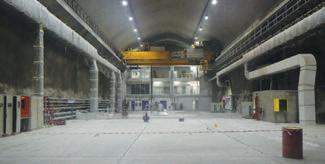


basin transfer schemes abstract water from the adjacent Lemoi and Telom catchments and discharge it to the reservoir via two bored tunnels.
A power waterway tunnel system transfers water from the reservoir to the power station and returns it to Sg. Telom approximately 4km downstream from the dam site.
The Ulu Jelai Underground Power Station (which is sometimes described as the Generating Station, Powerhouse or Generating Plant) has a generating capacity of 372MW with an average annual energy of 374GWh.
The underground power station complex, formed of caverns, tunnels and shafts, is connected to many waterconveying and open tunnels and contains the following:
• Power station (including machine, assembly and service bays),
• Transformer hall,
• IPB galleries,
• Draft tube conduit and tunnels and,
• Surge chamber and,
• Other underground facilities.
As such, the power station complex is considered one of the main engineering feats of the whole Ulu Jelai project.
Drill and blast techniques were employed for the excavation of the underground power station, transformer and surge chamber caverns.
The power station cavern itself, comprising two vertical shaft Francis Turbo Generator units, has dimensions of 82m in length, 45m in height and 24m in width.
The structures in the complex were built using conventional reinforced concrete methods. A total of 19,000 cubic metres of concrete was poured into the complex.
There are 8 floors, of which 5 are for the electromechanical plant and the rest for operational services and administrative purposes such as offices and control areas, amenities and ventilation system.
The power station, transformer hall and surge chamber cavern were excavated in fresh, coarse grained porphyritic (strong to very strong granite). The discontinuities had 2-3 joint sets with random. Rock classes were G1-G2.
The rock class and support classification as per an extract table.
Support Type Table - Drill and Blast and Shaft
Rockmass Unit "Q" Range (General) "Q" Range (Tailrace Tunnel) (Headrace Main Tunnel) (Headrace Intackeshaft) (Main Access Tunnel)
G1↓, G1 > 6 > 10
G2 2 TO 6 2 TO 10
G3, WG1 0.2 TO 2 0.2 TO
WG2 0.02 TO 0.2
Support Type

dimensions and with minimal over and under-break. The excavations were completed on 29 December, 2013.
There were various sets of both 15m-long extensometers placed in the crown of the caverns and convergence optical targets placed to the wall of the cavern, all progressively installed and monitored as the excavations were carried out, phase by phase.
There was a relatively small amount of groundwater inflow encountered in the caverns during the excavation. However, as precaution against future groundwater, inflows strip drains were installed to the crown of the Power House Cavern, Transformer Hall Cavern and Surge Chamber Cavern at 2m spacing underneath the shotcrete. The ends of the strip drains were connected to perimeter collector drains which discharged into the dewatering pit.
Support Type 1
Support Type 2
Support Type 3
TO 0.2 Support Type 4 "Residual Soil/ Completely Weathered Rock" or WG3 < 0.02 0.02
Support Type CW or WG3
The underground excavation of the main power station cavern, which comprises the Machine (Hall), Service and Assembly Bays, was carried out starting from the Main Access Tunnel (MAT) towards the Construction Adit.
Excavation started on 16 December, 2012, using drill and blast methods. The staged cavern excavations were started in an 8.30m-wide central heading in the cavern crown. This phase proceeded with full-face drill and blasting in advances some 2-4m long, as determined by space available for the drilling jumbo and the encountered rock conditions.
The two adjacent side headings proceeded with equal face advances as soon as the central heading had advanced a minimum of 18m. Special attention was given to the drilling procedures, especially as the end of some of the drilled holes were planned to form the final excavation surface of the caverns crown and walls.
Pre-splitting and smooth-blasting techniques were used at each stage as necessary to achieve the required cavern
In general, the Contractor was able to achieve acceptable quality in accordance with the specifications and all non-compliances were eventually closed out. The necessary contractual framework needed to properly supervise the construction works, was in place prior to the start of construction, enabling the Engineer to manage, monitor and record the performance of the Contractor at every stage. The construction works proved to be a valuable experience for everyone involved and provided lessons in how to adopt a constructive and a teamwork approach to handling technical issues. Such an opportunity will encourage local young engineers to consider a career in tunnelling.
Authors' Biodata
Title: ICTSIG Digital Class (JUNE 2017) - Introduction to Java Programming Part 3 10 June 2017
Organised by : Information and Communications Technology Special Interest Group Time : 11.01 a.m. - 1.10 p.m.
CPD/PDP : 2
Kindly note that the scheduled events below are subject to change. Please visit the IEM website at www.myiem.org. my for more information on the upcoming events.










by Ir. Shum Keng Yan
In our daily lives, we are driven to act in a certain way because of the organisational process and human behaviour (ourselves and people around us).
In the last few years, we have been looking at organisational processes, be it management systems or the various regulations. Now, let us take a look at what influences behaviour and some foundation.
We can start with the organisational look and feel. The organisation can put in place certain basic beliefs that will influence employees in the way they behave. People are influenced by:
1. Visuals, e.g. the presence of a policy, awards, housekeeping, signages, posters etc.
2. Routines, e.g. the daily toolbox talks, inductions.
3. Processes, e.g. the management system.
4. Controls, e.g. the risk assessments, permit systems, regulation, rules.
5. Empowerment, e.g. the ability to stop an unsafe work process by ourselves or others.
6. Leadership, e.g. the involvement of leadership in activities.
Imagine this scenario:
As you first walk into the worksite, you noticed the place is well kept and that parking lot lines are visible. A Personal Protective Equipment signage informs you of the site requirements. As you continue and step into the reception area, you are greeted with safety awards on the shelf and the EHS Policy. You sign in and you are issued a visitor’s badge and safety instructions.
After you have registered, you are issued with appropriate Personal Protective Equipment for your visit.
As you follow your host to the work area, you can see that the employees are properly attired. You do not see paintwork that is peeling or huge puddles of liquid or spills on the floor. A group of technicians are carrying out maintenance and you observe that Lock Out/Tag Out is done. As you approach, a technician greets you and informs you that the maintenance area is restricted. You thank him for the reminder and you hurry on to follow your host.
How you do feel after reading the scenario above? Does it “feel” right? The “look and feel” can make a very strong impression on our initial perception of how serious an organisation is about safety. If the management is able to define the look and feel, it can drive the organisation towards what is defined as World Class Safety or Safety Excellence. The inability of an organisation to achieve excellence is, oftentimes, not due to the lack of paperwork but due to the lack of being able to describe the “look and feel”. This sets the foundation for building behaviour, by being able to provide the proper surroundings and pride in keeping the surroundings. Share with us your “Look and Feel” at: pub@iem.org.my. Prepare and Prevent, Not Repair and Repent.












reported by Ir. Khoo Chee Min Dr Wang

The Institution of Engineers, Malaysia (IEM), through its two wholly-owned subsidiaries, IEM Training Centre Sdn. Bhd. (IEMTC) and IEM Academy Sdn. Bhd., organised a two-day conference titled “The Southeast Asian Conference and Exhibition in Tunnelling & Underground Space 2017” (SEACETUS 2017) on 18-19 April, 2017, at Dorsett Grand Subang in Subang Jaya, Selangor, Malaysia.
With the completion of the SMART tunnel, IEM’s Tunnelling & Underground Space Technical Division (TUSTD) held the first International Conference and Exhibition on Tunnelling & Underground Space (ICETUS) in 2006, to record the significant progress and development in the industry here.
The second and third ICETUS conferences in 2011 and 2015, coincided respectively with the substantial completion of the Pahang-Selangor Water Transfer Tunnel, and the tunnel section of the massive development of Klang Valley Mass Rapid Transit SBK Line 1.
Last year, at the WTC2016 in San Francisco, IEM announced its intention to bid for ITA-AITES World Tunnel Congress 2020. A bidding committee was formed, comprising TUSTD committee members led by Ir. Dr Ooi Teik Aun. In record time, by September 2016, the Southeast Asian Conference and Exhibition in Tunnelling & Underground Space (SEACETUS 2017) as well as a twoday post conference Training Course on Principles for Tunnel Design, were conceived and launched in support of the WTC 2020 bidding. The bid document was then submitted to ITA Executive Council and accepted in January 2017.
The success of an event cannot be measured solely by the amount of financial surplus from the organising of the conferences. A comparison of tunnelling conferences conducted by IEM in the last 10 years, shows progress achieved in five main areas (measured in numbers): Conference sponsors, exhibitors, advertisers, participants and conference papers (see Table 1). SEACETUS 2017 was once again a tremendous success, according to feedback from the conference participants.
From the very beginning, tunnels have been associated with KTM railways (e.g. Butterworth-Singapore Line, GemasTumpat Line), construction of dams (e.g. Kelinci Dam water transfer tunnel, diversion tunnel of the Sungai Selangor Dam, pressure tunnels and powerhouse for the Pergau Dam, etc.) and highways such as Genting Sempah twin

tunnels at Karak Highway and Penchala Link twin tunnels as well as the subway Light Rail Transit (LRT) system.
Tunnelling activities gained momentum in the 21st century with the construction of the Storm Water Management and Road Transport System (SMART) dualpurpose tunnel, Pahang-Selangor interstate water transfer tunnel, double tracking electrified railway tunnel (Bukit Berapit and Larut tunnels) and, more recently, the on-going Mass Rapid Transit (MRT) project and the planned High Speed Rail (HSR) and the East Coast Railway Link (ECRL) tunnels.
Hundreds of tunnels, with a total length of at least 300km, have been constructed in Malaysia since the 1900s. The milestones marked and the cumulative length of all constructed tunnels are shown here (see the following figures).
Ir. Dr Ooi and Ir. Khoo (2017) documented tunnelling activities in Malaysia for the past decade (2005-2015) and predicted the exponential development of tunneling in the future.
In 2003, tunnelling became more important when there was an acute need to address major flooding issues in Kuala Lumpur. Because the city space was almost fully developed, the flood mitigation infrastructure had to be taken underground via tunnelling through its extreme karst geology.
From the initial incepted flood mitigation tunnel, an ingenious dual-purpose construction was conceived at the design stage and a motorway tunnel was integrated into the system to reduce traffic congestion at the main Southern Gateway leading to the city centre. The SMART Tunnel, regularly featured on National Geographic and Discovery TV channels, won international accolades such as the British Construction Industry International Award (2008) and the United Nation’s Habitat Scroll of Honour Award (2011), in recognition of work in the field of human settlements development in urban centres around the world. In April 2015, it was again described by the United Nations as one of the most innovative projects in the world for an urban issue. CNN also listed the SMART tunnel as one of the world’s top 10 greatest tunnels.
The spin-off effects of the SMART tunnel on Malaysia and the tunnelling community worldwide, are too great to be ignored. Locally, the project inspired the innovation of the Variable Density Tunnel Boring Machine (VD TBM) when Malaysia decided to embark on its metro system, with unprecedented tunnelling challenges in the cavernous karstic limestone for the 9.5km stretch of a twin bored tunnel with 7 underground stations for the 51km Klang Valley MRT Line 1. The VD TBM broke all conservative rules and we achieved what was considered “impossible” in the past.
At the same time, local tunnelling experts became highly regarded for having honed the right skills and gaining the expertise to take tunnelling to the next level in innovation technology (Ooi, 2017). The establishment of the world’s first tunnelling school, Tunnelling Training Academy (TTA), in 2011 and the recent initiative to set up the local TBM refurbishment plant, an extension of the TTA to train




EASTERN PRETECH (MALAYSIA) SD N. BHD . 28, Jalan 7/108C,Taman Sungai Besi, 57100 Kuala Lumpur.
Tel: +603-7980 2728
Fax: +603-7980 5662
www.epmsb.com.my








Milestones of the First Tunnels constructed, according to years

Milestones of the First Tunnels constructed, according to category
locals in high technology and niche tunnel engineering, are steps forward for Malaysia’s sustainable tunnelling industry.
Already, TTA has produced 500 “graduates” and contributed towards improving the tunnelling know-how of our workforce. The consistent Joint Training Courses of IEM-ITACET during ICETUS 2006/2011/2015 and SEACETUS 2017 have also helped to increase the number of tunnelling professionals in the country.
The golden era of tunnelling has put Malaysia on the world map as an active member nation of International Tunnelling & Underground Space Association, ITA-AITES. Indeed, our achievements in tunnel and tunnelling technology in the past 15 years have been most impressive. This shows that Malaysian professionals have not only learnt from the training but more importantly, have also developed their own expertise to come up with ingenious underground solutions to their problems.
It is no surprise that IEM has submitted a bid to host the ITA-AITES World Tunnel Congress 2020 (WTC 2020) in Malaysia with the theme, “Innovation and Sustainable Underground Serving Global Connectivity”. The other two bidders are Australia and India; both held WTC 2002 and WTC 2008 respectively.
Bidding for this prestigious event is held three years in advance. The event is held in high esteem by leaders in Tunnelling & Underground Space Engineering. A dedicated team, led by IEM President Ir. Tan Yean Chin, together with Ir. Dr Ooi Teik Aun, will be at WTC 2017 in Bergen, Norway, on 9-15 June, 2017, where the voting will take place. The support of ITA member nations in Southeast Asia and other parts of the world, is being actively solicited to vote for Malaysia and we are all hoping the Malaysian dream will come true in Bergen, Norway!

reported by

Dr Rini Asnida Abdullah
"The best brains of the nation may be found on the last benches of the classroom,” ~ Dr APJ Abdul Kalam.
Inspiring young talent is important to ensure continuity and sustainability. Tunnelling is not widely known to the engineering world or, more importantly, to young inspiring engineers. So the Tunnelling & Underground Space Division (TUSD) has taken the initiative to inspire young engineers so that they will be interested to gain knowledge and eventually be the key participants in the tunnelling industry here and abroad.
Spurring the interest of young engineers is the key to get them to pay attention to tunnelling. Armed with that vision, TUSD prepared a nationwide informative drive at selected universities to inspire the young.
On the 26 March 2017, The Faculty of Civil Engineering, Universiti Teknologi Malaysia, organised a half-day talk for 55 participants comprising undergraduates, post-graduate students and academics from UTM, Universiti Tun Hussien Onn (UTHM) and Universiti Teknologi MARA (UiTM).
The two speakers were TUSD Chairman Ir. Syed R. Hussain and committee member Mr. IIanchelvan Polanippan.
The programme was initiated by the Tunnelling and Underground Space Division of IEM as part of the University Adoption Programme. The aim was to instill awareness among graduates of the division’s role and its membership drive as well as to expose graduates to tunnelling. The talk was part of the post-graduate’s elective subject in Tunnelling Engineering. The programme has also been planned for selected local universities.
Universiti Teknologi Malaysia has introduced a Tunnel Engineering course for the Master Engineering student. It is the first faculty in Malaysia to offer such a course, it joins the ranks of a few universities providing a similar course. The course was introduced based on input and initiative by TUSD.
In his welcome speech, Faculty Dean Prof. Khairul Anuar said collaboration programmes between the university and practitioners (tunnel engineers), such as this talk, were definitely a value-added part of the course.
There were six sessions. The talk introduced the scope of Tunnel Engineering, the latest technology in tunnel

construction and case studies of tunnelling work in MRT here and in the United Kingdom, as experienced by both speakers.
Ir. Syed Rajah presented the first three sessions on Underground Survey, Tunnelling in Soft Ground and Tunnelling in Hard Rock. In the afternoon session, Mr. Ilanchelvan talked about Mechanised Tunnelling and Tunnel Lining as well as Instrumentation and Monitoring.
In the last session, Ir. Syed Rajah covered Health, Safety and Environment Considerations. He closed the session with “Contactor vs the sheep, the duck and the dog”, sharing interesting environmental issues faced during his working experiences in United Kingdom.
It was an interesting experience-sharing session and, with high interaction from both students and lecturers, the talk ended an hour later than scheduled!
Title: 2-Day Course On Understanding The Construction Contracts – Failures & Remedies
13-14 June 2017
Organised by : Project Management Technical Division
Time : 9.00 a.m. - 5.30 p.m.
CPD/PDP : 14
Kindly note that the scheduled events below are subject to change. Please visit the IEM website at www.myiem.org. my for more information on the upcoming events.
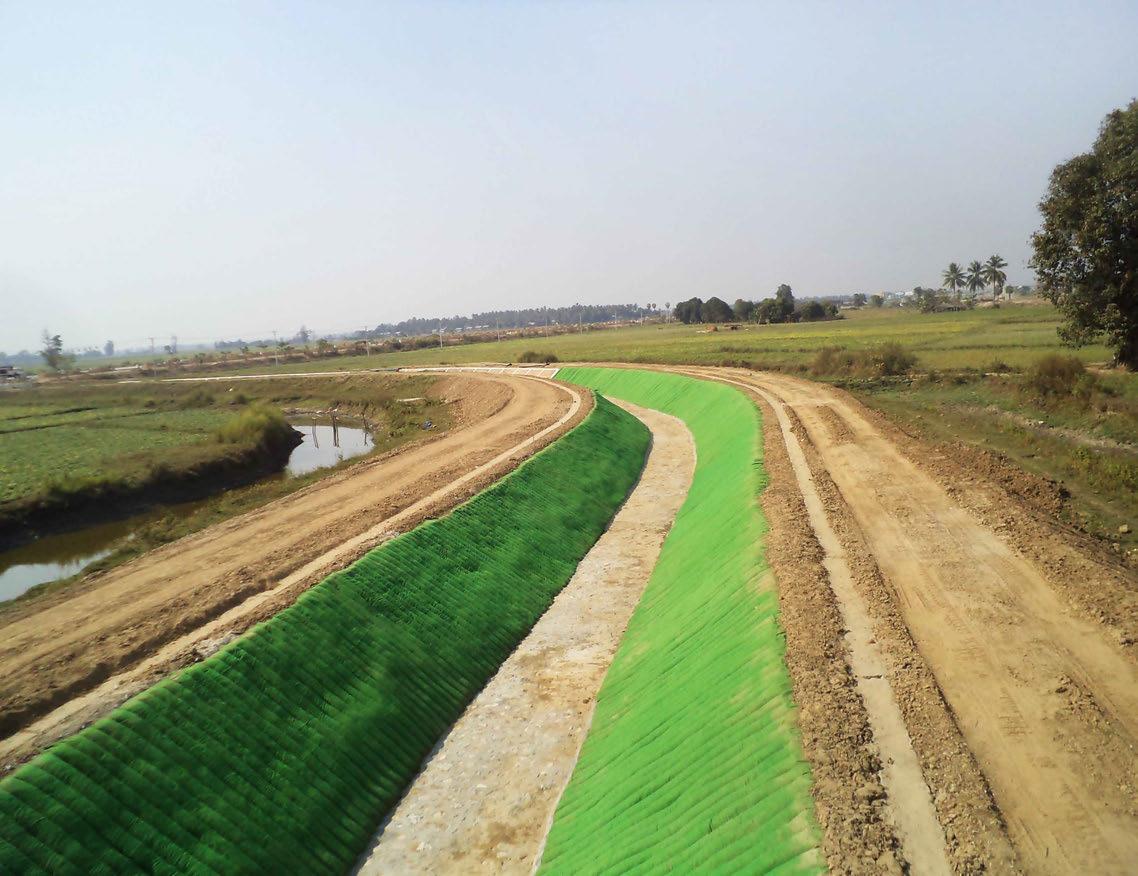

reported by

Siow

IEM Electrical Engineering Technical Division (EETD) organised a technical visit to Cameron Highlands Sultan Idris (II) Woh Power Station on 13 February 2017. This was the first activity for EETD in 2017.
A total of 22 participants registered for the event and 3 self-drove from Kedah and Perak. The other participants departed from IEM early in the morning and reached the power station at about 10 a.m. where they were warmly welcomed by Mr. Tan Beng Wee, the Occupational Safety Health & Environment Manager, Encik Nik Faris, the Senior Engineer (Production), and several other TNB personnel.
Mr. Tan gave a safety briefing and asserted the importance of safety during the site visit later. He highlighted emergency and safety precautions such as safety exit points/routes, procedure for evacuating the building and designated areas for gathering. He said we should not panic should an emergency arose. The taking of photographs was strictly prohibited during the visit to the power plant.
Then Encik Nik Faris made a presentation on the overview of the Cameron Highland hydroelectric scheme which spanned Kelantan, Pahang and Perak.


There are a total of 7 power stations, including 2 underground stations at Jor and Woh. Robinson Falls was commissioned in 1959, followed by Woh in 1967 and the total cost of the project at that time was RM267 million. The entire Cameron Highland hydroelectric scheme has a total generation capacity of 633MW, with 622MW being exported to the grid and the remainder for local consumption.
The Woh Power Station uses the vertical Francis turbine. All the stations are connected by 40km of water tunnels. The total catchment area is spread over 394.4 sq. km. and there are 15 water intakes. The power plants are actually “peaking” power plants, in the sense that they operate based on demand from the National Load Dispatch Centre in Bangsar, Kuala Lumpur. On a daily average, the power plants operate 8 hours during the day as power demands peak in the morning, noon and evening.
At the end of the presentation, there was a brief Q&A session where questions included one on the selection of turbine. According to Encik Nik, the Pelton turbine was generally preferred in high head application while the Francis turbine was preferred in high volume application.
The delegation then visited the generation areas of the plant. The participants were transported in vans to the turbine and power generation areas. The Woh Power Station has a head of 40m and the turbines rotate at 600rpm with the generators having 10 poles. Each of the 3 generators has a capacity of generating 50MW running at 0.9 power factor.
The participants were able to observe and ask question about the working principles of turbines, generators, transformers and the control systems in place for regulating and keeping the entire operation running smoothly.
The visit ended with Mr. Alex Looi presenting a token of appreciation to Encik Nik.
Title: 1-Day Short Course on Design of Pumping Drainage System for Urban Stormwater Runoff - Rescheduled from 18 May 2017
15 June 2017
Organised by : Water Resources Technical Division
Time : 9.00 a.m. - 5.25 p.m.
CPD/PDP : 6
Title: Talk on “Solving Engineering Problems by Systematic Innovative Approach: Acquiring TRIZ as your Skill”
5 July 2017
Organised by : Urban Engineering Development Special Interest Group
Time : 5.30 p.m. - 7.30 p.m.
CPD/PDP : 2
Title: Talk on Global Landbridge (OBOR) and Ocean Thermal Energy (OTEC)" Using the Engineering Finance Methodology in Designing "Cost Efficient" Projects to Enhance the Return on Investment
8 July 2017
Organised by : Oil, Gas and Mining Engineering Technical Division
Time : 9.00 a.m. - 11.00 a.m.
CPD/PDP : 2
Kindly note that the scheduled events below are subject to change. Please visit the IEM website at www.myiem.org.my for more information on the upcoming events.







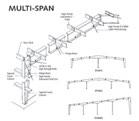

reported by

Dr Lee Choo Yong
IEM eETD organised a technical visit to Knowles Electronics (M) Sdn. Bhd. in Bayan Lepas Industrial Park, Penang, on 16 February, 2017. One of Knowles Corporation’s main factories, it has been producing microphones since its establishment in 1989.
After the welcome remarks by Ir. Choon, Mr. Kee presented an overview of the Knowles organisation, the company history, product and application of hearing aid transducer, Micro Electro-Mechanical Systems (MEMS) microphone and engineering activities. Founded in 1946 by Hugh Knowles, a notable acoustic engineer, Knowles is currently a leading global provider of advanced voice and audio processors for mobile products. One of the most remarkable accomplishments of Knowles products was to amplify Neil Armstrong's words when he landed on the moon during the Apollo 11 mission in 1969.
Mr. Kee briefed the IEM delegates on the human ear structure and discussed some root causes of hearing impairment such as exposure to loud noise, age, birth defects and illnesses. Many types of hearing aid devices can be fitted to improve the hearing of a patient, such behind the ear, in the ear, in the canal or cochlear implant. Knowles designs and develops microphones for these hearing aids.


Then, Mr. Kee talked about the use of the six sigma –Define, Measure, Analyse, Improve and Control (DMAIC) – and the "Theory of Inventive Problem Solving (TRIZ)" in the production and process development to meet high-quality manufacturing standards. He also presented the product development life-cycle where innovation played a crucial role from design to production. The duration of the product development life-cycle depends on the complexity of the product and requirements.
The engineering team in Penang is responsible for new products and process development (NPD), new-product introduction (NPI), product engineering, development of automated manufacturing and testing process to minimise production conversion time and therefore, increase productivity. Mr. Kee stressed that the development of human capital was essential in the product development life-cycle.
After the technical presentation, IEM delegates visited the production line to obtain the basic idea of manufacturing and testing of the microphone products. They were impressed with the fascinating automation processes developed by engineers in Penang which met the stringent specification and requirements of the products.
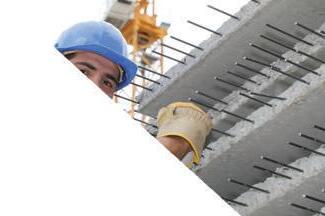
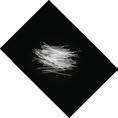







The delegates also visited the reliability testing laboratory which was equipped with a sound testing chamber. After the line tour, there was a Q&A session where IEM delegates had a chance to understand further about the processes and products they had seen earlier. Dr Leow Cheah Wei from eETD asked about the possibilities of a collaboration with IEM and Ir. Choon responded that there was a lack of engineers trained in the acoustic engineering and so, most of the engineers in Knowles are from a diverse engineering background and they acquired the knowledge in acoustic engineering through on-the-job training. Dr Leow, who is also on the industry advisory panel for Universiti Sains Malaysia (USM) said he would highlight to USM the opportunity to train students or engineers in acoustic engineering via academic-industry collaborations.
At the end of the visit, Ir. Lee presented a certificate of appreciation to Ir. Choon.
RESULTS OF ELECTION OF COUNCIL VACANCIES 2017/2018 (CLOSE OF BALLOTING ON 4-APRIL-2018)
Vice President (4 posts)
• Ir. Prof. Dr Ruslan bin Hassan
• Ir. Lai Sze Ching
• Ir. Ong Ching Loon
• Ir. Lee Boon Chong
Honorary Secretary
• Ir. Yap Soon Hoe
Honorary Treasurer
• Dr Wang Hong Kok
Council Member –
Civil Representative
• Ir. Dr Lee Yun Fook
Council Member –
Electrical Representative
• Ir. Lim Kim Ten
Council Member –Mechanical Representative
• Ir. Fam Yew Hin
Council Member –
Structural Representative
• Ir. Dr Ng Soon Ching
Council Member –ICT and Multimedia Representative
• Ir. Dr David Chuah Joon Huang
Council Member –
Ordinary Representative (6 posts)
• Ir. Dr Leong Wai Yie
• Ir. Razmahwata bin Mohamad Razalli
• Ir. Abdul Razak bin Yakob
• Ir. Yau Chau Fong
• Dato’ Ir. Foong Choy Chye
• Dato’ Ir. Kisai bin Rahmat

reported by

Ir. Chew Weng Yuen
The Engineering Education Technical Division co-organised a talk on “Communication Skills for Business Applications” with Engineers Australia Malaysia Chapter and the Institution of Mechanical Engineers Malaysia Branch, on 27 February, 2017, at Wisma IEM.
The talk, attended by 32 participants, was delivered by Ir. Dr Ling Chen Hoe, Senior General Manager and Director of Meiden Malaysia.
Ir. Dr Ling started by reviewing the various modes of communication that humans had used, from ancient times to the present day.
Modern communication methods include one-way (memo, facsimile, e-mail, letter), two-way (phone call, inperson), to collaborative (team meetings, consultations, consensus, decision making, group problem solving).
According to Ir. Dr Ling, a worker spends 50% of the day on communication related tasks, 36% trying to contact people, looking for information and scheduling meetings, while 14% is spent on duplicating information and dealing with unwanted communication.
He said the basic communication principle is that in any type of communication, there is a sender and a recipient. The sender sends information and the recipient decodes the received information and responds accordingly to that he/she understands the information.
As such, the sender must be concise and clear as to the purpose and objective of the communication. One must also be aware of the audience and use language that is suitable for the intended audience. Ir. Dr Ling stressed that clarity is vital in any form of communication. One must use clear and precise language so that the intended message will not be misunderstood. Lastly, the recipient must actively listen and then clarify his/her understanding of the message being communicated.
In any business organisation, he explained, there will be external and internal communications. External communication is that between an organisation and its customers, government agencies, clients, public and so on; internal communication is that within the organisation itself.
There are two channels of internal communication: Formal and informal. Formal communication consists of
formal reports, memos, briefings and meetings. These can be communicated upward, downward, horizontally, or diagonally throughout the organisation hierarchy. Informal channels are informal emails, ad-hoc talks and the grapevine.
Ir. Dr Ling said the most common communication problems in the workplace are language barriers, personal issues (where employees allow personal disagreements to affect company communication), lack of feedback on communication and poor listening skills.
Other barriers to effective communication include filtering of information so that it will be seen as more favourable to the receiver, selective perception by the receiver based on his/her own needs and personal characteristics as well as defensiveness by the receiver which may retard the communication.
Ir. Dr Ling then discussed the basic types of communicators: Assertive, aggressive, passive and passiveaggressive. He said assertive communicators will clearly and respectfully communicate their own needs and strive for mutually satisfactory solutions. Aggressive communicators will attempt to get their own way through manipulation and control tactics. On the other hand, passive communicators will try and avoid confrontation; they are also compliant and often put the needs of others before their own. Lastly, passive-aggressive communicators are those who avoid direct confrontation but will not hesitate to use devious means to get their own way.
Ir. Dr Ling then discussed the effects of generational differences on effective communication as traditionalists (1922-1945), baby boomers (1946-1964), Generation X (1965-1980) and millennials (1981-2000) have different ways of communication. One needs to communicate according to the generational background of the recipient as each generation has distinct attitudes, behaviours, expectations, habits and motivational buttons. Learning to effectively communicate with someone from a different generation can eliminate major confrontations and misunderstandings in the workplace.
Culture also plays a part in effective communications. Ir. Dr Ling said it is imperative to develop an understanding
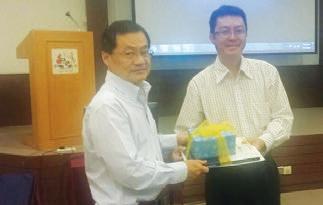
Ir. Chew Weng Yuen of the Engineering Education Technical Division presenting a memento to Ir. Dr Ling Chen Hoe
of, and a deep respect for cultural differences in order to have effective communication with business associates from different cultural backgrounds.
He elaborated on the high-context versus the lowcontext cultures of various nationalities. High-context cultures are those which rely heavily on non-verbal, subtle situational cues while low-context cultures are those which rely heavily on words to convey meaning.
Ir. Dr Ling said successful leaders are also successful communicators. They use communication as a means to connect with the public and this is what makes them effective. Similarly, whether a business succeeds or fails, is also hinged on trust and communication between the business partners.
The talk ended with the chairman of the session, Ir. Chew Weng Yuen, presenting a memento to Ir. Dr Ling.
IEM is pleased to announce that the Board of Engineers, Malaysia (BEM) had decided to give a grace period until 31 December 2017 for a person who had been elected as Corporate Member of IEM after the implementation of the REA 1967 (revised 2015) to apply for registration as Professional Engineer with BEM.
After the deadline of 31 December 2017, Regulation 18(2A) will be enforced by the BEM accordingly. Regulation 18(2A) states that:
(2A) A Graduate Engineer shall submit an application for registration as a Professional Engineer within one year -
a) from the date he is informed by the Board that he has passed the Professional Assessment Examination as mentioned in regulation 38; or
b) from the date he becomes a corporate member of The Instituition of Engineers (Malaysia).
2 Day Course on Design Applications to Eurocode EC 2
- from the Perspectives of Consulting Engineers(with emphasis on fundamental approachmanual computation and structural software )
Course Presenter

• Practicing Structural Consulting Engineer
• Principal of M C Hee & Associates
• Expertise in the design and construction of high-rise buildings particularly in value engineering and alternative design
• Philosophy is “design for simplicity and buildability” with a “total concept approach”
• 40 years’ of experience in this field
• Well versed in computer modelling of high-rise buildings and current interest is in strut and tie applications in the eld of structural engineering particularly transfer girders and deep beams
• Strongadvocate of manual check methods
• Registered accredited structural checker in BEM and highly regarded in the investigation committee
• Vice President of IEM from 2009 to 2011, Chairman for drafting the Malaysian National Annex of EC0, EC1, EC2
• Active member of Technical Committee drafting the Malaysian National Annex of EC8
• Conducted other intensive courses such as Design to BS8110, Eurocodes EC0, EC1 and EC2, Finite
Element Modelling of Deep Beams and Raft Foundation and Analysis and Design to EC8
• Sketching deflection profile by hand, followed verification by 2 cycle moment distribution. Transform the indeterminate structure by making the structure statically determinate without violation of the boundary conditions(short cut). Compute rotation/deflection using principle of virtual displacement. Design/analysis of concrete sections by simpli ed uni ed method seamlessly.
• Gain better understanding on how to use loadings and load combination in EC0,EC 1 and EC 2.Refer to detailed example on how to use ψ,ψo,ψ1 and ψ2
• Conversion shear(kn) in stress units(mpa) allows the engineer to have a better feel of how the structure response to the e ect of shear force
• A definite way to determine the columns in the building are braced or unbraced
• Serviceability limit states-Bond,Durability and fire resistance, loads and load combination are explained in detailed
• Participants are more confident to use Eurocodes to design slabs,beams,columns and walls both in bending and shear.
Session 1: Back to Basics on Structural Fundamental
Session 2: Serviceability limit states-Bond,Durability and re resistance
Session 3: Loadings and load combinations
Session 4: Uni ed Approach to Bending-Design & Analysis on Concrete Sections
Session 5: Shear using stress units
Session 6: 1 way and 2 way RC slabs
Session 7: RC Beams
Session 8: RC Columns
Session 9: Plain walls and RC walls
Closing Date: 16 August 2017
* Prices shown above inclusive of 6% GST. Price before GST is RM 2,000 (Individual), Rm1,800 (Group).
Please Contact Applied Technology Group Sdn Bhd: Phone: 03-5634 7905 / 012-3174 863
Fax: 03-5637 9945
Email: admin@apptechgroups.net
12 BEM Approved CPD-Hours (ISE/MD/CPD/ATG/016)
CIDB Approved CCD-Points (Application in progress)
Please visit our website at www.apptechgroups.net for detailed course brochure or other engineering related courses.
Your equalizer to handle simple to complex jobs at an affordableprice
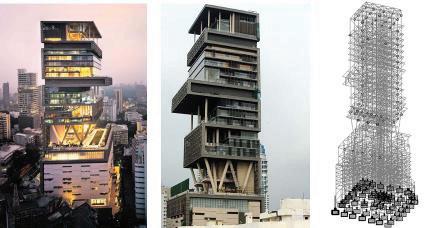


MULTI PUROSE LICENSE KEY THAT PROVIDES A SINGLE USER ACCESS TO THE STAAD & RAM PRODUCT LINES.

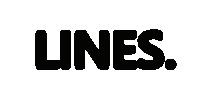


VR-CAM Technologies SdnBhd
No 79, OG Business Park, Tmn Tan Yew Lai, 58200 Kuala Lumpur
Tel: (03) 7782 8898, 7785 8898 Fax: (03) 7782 6898
Web: http://www.vrctech.com
Contact :-
S.Naren: 013-3477317 :Email: naren@vrctech.com
Ruben : 017-8818893 : Email: rubenp@vrctech.com
Automate wind notional & seismic loads with ease.
BS 8110,BS 5950 2000, BS 5950 part 5, BS 5400 part 2 & part 3, BS 8007
EC-2,EC-3,EC-5,EC-8 – Includes various country annexes
Malaysia Annex for EC-2 & EC-3 included, UBC, IBC & etc


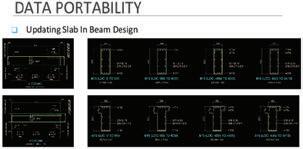



AIr. Chin Mee Poon www.facebook.com/chinmeepoon
Ir. Chin Mee Poon is a retired civil engineer who derives a great deal of joy and satisfaction from travelling to different parts of the globe, capturing fascinating insights of the places and people he encounters and sharing his experiences with others through his photographs and writing.
fter trekking for 5 days in the Simien Mountains, my friends and I flew from Gondar to Lalibela in early October 2016 to visit its rock-hewn churches which were admitted to UNESCO’s list of world heritage sites in 1978.
A small town with a population of 19,000, Lalibela is situated 2,630m above sea level on rocky highland 330km north of Addis Ababa, the capital of Ethiopia. The 24km drive from the airport to the town took us through an extremely scenic broad valley with a multi-coloured patchwork of agricultural crops.
On our first day there, we had dinner at Ben Abebe, a cliff-top restaurant that resembled a large multi-level observation tower with a partially completed roof. The valley in front of us stretched all the way to the faint distant mountains behind which the sun hid after making the earth blush. The views were certainly as appetising to our eyes as the food was to our taste buds.
The highlight of our two-day stay in Lalibela was of course the rock-hewn churches that had attracted us in the first place. Imagine this: A king wanted to turn this place into another Jerusalem by building many churches and, to make those churches stand and last for a long, long time, he decided they should not be built the normal way but rather, be carved out of solid rock.

So he mobilised hundreds if not thousands of workers to hack the rocky ground to isolate a huge block that in plan was squarish, rectangular or in the shape of a cross. Then he got the men to chisel at the block to turn it into a building with doors, windows, arches, beams and columns. Then, after artisans decorated the interior with paintings of biblical stories, the church
was ready to open its door for the first service.
The king in question was Lalibela and the place was then known as Roha. Altogether, 11 churches were successfully carved out of solid rock. There is a cluster of 5 churches northwest of River Jordan and another 5 southeast of the river while the last is neither here nor there.
King Lalibela ruled from 1181 till 1221; he made Roha the capital of the Zagwe Dynasty. Some 800 years later, these rock-hewn churches are still standing even though some of them are in need of repair and protection from the elements. Roha was renamed Lalibela after the king and, for followers of Ethiopian Orthodox Christianity, the town became the second most sacred place in Ethiopia after Axum further north.
Many historians, however, believed that not all the rock-hewn churches were completed during King Lalibela’s reign, judging from the vastly varied architectural styles and the amount of time and labour that would have been required to construct the buildings with such high standards of fine finishing.
Whatever the truth behind those buildings, my friends and I certainly had a most satisfying and enjoyable time inspecting all the 11 rock-hewn churches of Lalibela.
We also visited Yemerhane Kirstos Cave Church at the edge of a village 42km away. Even though that church, built by an earlier king of Zagwe Dynasty, was constructed of alternate layers of timber and marble, some people believed it was used as a model for some of the rock-hewn churches of Lalibela.
It is truly amazing how man’s faith in the Almighty can be so solidly grounded!









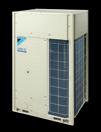


Tarikh: 22 Mei 2017
Kepada Semua Ahli,
Berikut adalah senarai calon yang layak untuk menduduki Temuduga Profesional bagi tahun 2017.
Mengikut Undang-Undang Kecil IEM, Seksyen 3.8, nama-nama seperti tersenarai berikut diterbitkan sebagai calon-calon yang layak untuk menjadi Ahli Institusi, dengan syarat bahawa mereka lulus Temuduga Profesional tahun 2017.
Sekiranya terdapat Ahli Korporat yang mempunyai bantahan terhadap mana-mana calon yang didapati tidak sesuai untuk menduduki Temuduga Profesional, surat bantahan boleh dikemukakan kepada Setiausaha Kehormat, IEM. Surat bantahan hendaklah dikemukakan sebulan dari tarikh penerbitan dikeluarkan.
Ir. Yap Soon Hoe Setiausaha Kehormat, IEM,
PERMOHONAN BARU
Nama Kelayakan
KEJURUTERAAN AWAM
ADY BIN ADNAN BE HONS (UTHM) (CIVIL, 2008)
AHMAD NUR HAQIM BIN
JALALLUDIN BE E HONS (UKM) (CIVIL & STRUCTURAL, 2009)
AW SER KANG BE HONS (ADELAIDE) (CIVIL & STRUCTURAL, 2004)
HANAN BIN ELIAS BE HONS (MALAYA) (CIVIL, 1984)
JOHAN ISHAK BE HONS (RMIT) (CIVIL & INFRASTRUCTURE, 2012
MARIA BINTI MARCUS ME (KATHOLIEKE LEUVEN, BELGIUM) (CIVIL, 1993)
MOHD AZHAR BIN ABD HAMID BE HONS (UiTM) (CIVIL, 2004) MEM (UiTM) (2013)
MOHD AZIMUDDIN BIN YUNUS BE HONS (UTM) (CIVIL, 2006)
MOHD FAREID BIN ISA BE HONS (UPM) (CIVIL, 2006)
RAFIDAH BINTI MOHAMED RADZI BE HONS (UKM) (CIVIL & ENVIRONMENTAL, 2001)
RAYMI BT ARIP BE HONS (UiTM) (CIVIL, 2007)
KEJURUTERAAN ELEKTRIKAL
FARAH LOUBNA BINTI MOHAMED BE HONS (UNITEN) (ELECTRICAL & ELECTRONIC, 2001)
HAZEER@OZY BIN HASHIM BE HONS (UiTM) (ELECTRICAL, 2007)
MAISARAH BINTI MAHAMUD SAYUTI BE HONS (UNITEN) (ELECTRICAL & ELECTRONICS, 2009)
MOHAMAD AZMI BIN MD SHAHIT BE HONS (MALAYA) (ELECTRICAL, 2011)
MOHD AIZZUDDIN BIN MD MUHSIN BE HONS (UTM) (ELECTRICAL, 2008)
MOHD AZHAN BIN KADIR BE HONS(UNITEN) (ELECTRICAL POWER, 2007)
MOHD AZIZAN BIN MUHAMMAD BE HONS (UKM) (ELECTRICAL & ELECTRONIC, 2007)
MOHD HALIMI BIN MUHAMED
WAHAB BE HONS (USM) (ELECTRICAL, 2008)
MUHAMMAD AZMUN AMIN BIN AZIZ BE HONS(UiTM) (ELECTRICAL, 2006)
MUHAMMAD HASSANUDDIN BIN
HAJI HUSSEN BE HONS (UiTM) (ELECTRICAL, 2008)
NOR HANISAH BINTI BAHARUDIN BE HONS (UTP) (ELECTRICAL & ELECTRONICS, 2006) MESc (CURTIN) (RENEWABLE ENERGY ELECTRICAL POWER SYSTEMS, 2009)
QAWIZAMSHAH BIN MOHAMMAD BE HONS (UNITEN) (ELECTRICAL POWER, 2008)
KEJURUTERAAN LEBUHRAYA
RATNASAMY MUNIANDY BSc (SOUTH DAKOTA) (CIVIL, 1991) MSc (SOUTH DAKOTA) (1993) PhD (UPM) (2004)
KEJURUTERAAN KAWALAN & INSTRUMENTASI
MOMAS MODON BE HONS (LEEDS) (ELECTRICAL & ELECTRONIC, 1988)
KEJURUTERAAN MEKANIKAL
NOR AZMI BIN MOHD JAMAL BE HONS (UiTM) (MECHANICAL, 1996)
WAN AHMAD ZAMIR BIN WAN ABD RAHMAN BE HONS (UiTM) (MECHANICAL, 2007)
PERPINDAHAN AHLI
No. Ahli Nama Kelayakan
KEJURUTERAAN AWAM
38307 IKHWAN FARIZ BIN MAZRI BE HONS (UMP) (CIVIL, 2008)
54247 LAW CHUN TEIK BE HONS (UPM) (CIVIL, 2009)
29005 MOHAMED MEKHRAJUDIN BIN MUHAMMAD SAHID BE HONS (UiTM) (CIVIL, 2004)
89719 MUHAMMAD FAHMI BIN JOHAN BSc (ABERDEEN) (CIVIL, 2011) ME (UTM) (CIVIL-GEOTECHNICS, 2012)
23157 NG KEONG CHIN BE HONS (USM) (CIVIL, 2002)
32055 NOR AZIAN BINTI MOHD YUSOF BE HONS (USM) (CIVIL, 2011)
37945 ZAINIAH BINTI MOHD ZIN BE HONS (UTM) (CIVIL, 2007) ME (UTM) (CIVIL-HYDRAULICS & HYDROLOGY, 2008)
KEJURUTERAAN ELEKTRIKAL
41096 AMRUL HAFIZ BIN ASHARI BE HONS (UTM) (ELECTRICAL, 2003)
47073 EMMANUEL THOMAS BE HONS (UTM) (ELECTRICAL - MECHATRONICS, 2004) CONVERSION (UNITEN) (2013)
70412 LEE XI XIAN BE HONS (MULTIMEDIA) (ELECTRICAL, 2013)
39106 LIEW WUI KEONG BE HONS (UTP) (ELECTRICAL &ELECTRONICS, 2010)
87492 MAHENDRAN NAIDU A/L KRISHNAN BE HONS (UNITEN) (ELECTRICAL POWER, 2009)
89995 MOHD 'AMIRUL 'ADZMIE BIN MOHD SIDEK BE HONS (UTM) (ELECTRICAL, 2008)
87365 MOHD AZHAN BIN MOHMED@ MOHAMED ZAHARI BE HONS (UTM) (ELECTRICAL, 2008)
89601 MOHD FAIQ B. MOHD ROSLI BE HONS (UNITEN) (ELECTRICAL POWER, 2012)
87357 MOHD KHAIRUL BIN ISMAIL BE HONS (UKM) (ELECTRICAL & ELECTRONIC, 2008)
71145 MUHAMMAD FAISAL BIN KATMAN BE HONS (UiTM) (ELECTRICAL, 2013)
75255 MUHAMMAD SYAHRANI BIN JOHAL BE HONS (UTeM) (POWER ELECTRONIC & DRIVE, 2008)
70642 MUHAMMAD SYUIB BIN TAJUDIN BE HONS (UiTM) (ELECTRICAL, 2013)
88483 MUSNAZRIL BIN MUSTAQ KHAN BE HONS (UTM) ELECTRICAL, 2013)
87441 MUTHU KUMARAN A/L GUNASEGARAN BE HONS (UNITEN) (ELECTRICAL POWER, 2013) MPhil (MALAYA) (2016)
72182 ZAIRUL HARIRI BIN ZAKARIA BE HONS (UTM) (ELECTRICAL, 2013)
KEJURUTERAAN ELEKTRONIK
64648 T. NANTHAKUMARAN A/L THULASY BE HONS (UTM) (ELECTRICAL-ELECTRONICS, 2009)
19313 CHAI CHED CHANG BE HONS (MALAYA) (ELECTRICAL, 1998) MSc (MULTIMEDIA) (2002)
KEJURUTERAAN MEKANIKAL
46838 LAU YEE LEONG ME HONS (BIRMINGHAM) (MECHANICAL, 2010) 45833 MUHAMMAD HEIKAL BIN NASRIR BSc (KOREA) (MECHANICAL, 2009)
59939 KOAY LOKE KEAN BE HONS (USM) (MECHANICAL, 2009) PhD (USM) (2013)
KEJURUTERAAN PENGANGKUTAN
39247 NUR IZZI BIN MD. YUSOFF BE HONS (UKM) (CIVIL & STRUCTURAL, 2002) ME (UTM) (CIVIL-TRANSPORTATION & HIGHWAY, 2006) PhD (NOTTINGHAM) (2012)
KEJURUTERAAN KIMIA
54310 CHANG SIEW TEEN BE HONS (SHEFFIELD) (CHEMICAL, 2005) MSc (ENVIRONMENTAL & ENERGY, 2006)
84918 CHIN YEN WEI @ TAN YEN WEI BE HONS (UTM) (CHEMICAL, 1998)
PERMOHONAN BARU/PEMINDAHAN MENJADI AHLI KORPORAT
Nama Kelayakan
KEJURUTERAAN ELEKTRONIK MOHD RIZAL BIN ARSHAD BE HONS (LIVERPOOL) (MEDICAL ELECTRONICS & INSTRUMENTATION, 1994) MSc (SALFORD) (ELECTRONIC CONTROL, 1996) PhD (LIVERPOOL) (1999)
Title: Talk on “Issues of Vibration From Blasting”
10 June 2017
Organised by : Oil, Gas and Mining Engineering Technical Division
Time : 9.00 a.m. - 11.00 a.m.
CPD/PDP : 0
Title: You can move your own cheese – Strategic Problem Solving (Active Learning Lab Session)
10 June 2017
Organised by : Women Engineers Section Time : 9.00 a.m. - 11.00 a.m.
CPD/PDP : 0
Kindly note that the scheduled events below are subject to change. Please visit the IEM website at www.myiem. org.my for more information on the upcoming events.
The Sub-Committee of Engineering Hall of Fame under the auspices of the Standing Committee on Professional Practice is proud to invite nominations for the IEM Engineering Hall of Fame Award 2018.
It is timely and expedient to induct and to record the accomplishments of engineers in the country who have or had demonstrated particularly outstanding professional achievements and provided excellent services to the Institution, the engineering industry and the Nation.
The IEM Engineering Hall of Fame is established with the aim to confer recognition and to celebrate the accomplishments of members of the IEM:
• Who have demonstrated outstanding
professional achievements.
• Who have made significant contributions to the engineering profession, the Institution of Engineers, Malaysia (IEM) and the Nation.
• Who have rendered valuable service to the Community.
The Engineering Hall of Fame will serve as the focal point or showcase of outstanding Malaysian engineers, past and present, who had or have made great contributions to the engineering profession and to the quality of life in Malaysia. Engineers honoured in the Engineering Hall of Fame will also serve as a beacon and as role models for young engineers as well as create greater interest in engineering in general and awareness
of the contributions made by outstanding engineers in the country.
Nominations for the Award are open to Malaysian citizens who are or have been Corporate Members of the IEM.
The closing date for receipt of nominations for IEM Engineering Hall of Fame Award is 30 September 2017.
Please submit nominations to:
Hon. Secretary
The Institution of Engineers, Malaysia Bangunan Ingenieur, Lots 60&62 Jalan 52/4, 46720 Petaling Jaya, Selangor. The nomination form can be downloaded from the IEM website at www.myiem.org.my
For further details, kindly contact IEM Secretariat at 03-7968 4001/2
To encourage an interest in engineering and to recognise important services or contributions to engineering in Malaysia, the IEM Award for Contribution to the Engineering Profession in Malaysia is to be presented to the person(s), who has:
• Contributed to the advancement of engineering in Malaysia, and/or
• Designed and constructed an original engineering device or system of merit and applicability to industry.
This Award is open to all Malaysian citizens and permanent residents.
• Nominations will be invited annually. The closing date for receipt of nominations for each year is 30 September.
• Nominations shall be made through a member of the Institution. Each member is restricted to one nomination per year.
• Each nomination shall be accompanied by a brief write up of the services rendered or contributions made or system designed and/or constructed together with relevant photographs and other documents.
• The Award is to be made by the Council upon recommendation by the Awards Committee.
• The Award shall comprise a metal plaque, a scroll and a sum of RM1,000. The closing date for nominations is 30 September 2017
Please submit nominations to:
Hon. Secretary
The Institution of Engineers, Malaysia Bangunan Ingenieur, Lots 60&62 Jalan 52/4, 46720 Petaling Jaya, Selangor. The nomination form can be downloaded from the IEM website at www.myiem.org.my
For further details, kindly contact IEM Secretariat at 03-7968 4001/2
The IEM Outstanding Engineering Achievement Award is created to confer recognition to an organisation or body for outstanding engineering achievements within Malaysia. The award will be given to an organisation or body responsible for an outstanding engineering project in the country.
The basis for the award shall be an engineering achievement that demonstrates outstanding engineering skills which has made a significant contribution to the profession and to the quality of life in Malaysia. In making the selection, the following criteria will be given special consideration:
1. Contribution to the well-being of people and communities,
2. Resourcefulness in planning,
3. Creativity in the solution of design problems,
4. Pioneering use of materials and methods,
5. Innovations in planning, design and construction,
6. Unusual aspects and aesthetic values
Engineering achievements which include, interalia, the following can be submitted for
consideration:
• Bridges, Tunnels, Waterways Structures, Roads
• Telecommunications of national/ international character, Power Transmission and Transportation
• Dams and Power Stations
• Ports and Harbours
• Building and Structures
• Airports
• Water Supply, Waste Disposal Projects
• Military projects such as bases, launching units, harbour facilities
• Drainage, Irrigation and Flood Control Projects
• Local design and manufacture of high technology products
• Energy, Heat, Mass Transfer
• Outstanding work in engineering research and development
• Chemical processing of indigenous raw resources such as rubber, palm oil and various other local plants
• Innovative use of local engineering materials
• Outstanding contribution in engineering education
• Original discovery of useful engineering theory
Nominations are invited from all members of the Institution. Each nomination submitted should contain a brief summary/write-up of the project in approximately 1,000 to 2,000 words together with full relevant reports on the project and three copies of supporting documentation including photographs. A project or component part thereof which has received an earlier award, from IEM does not qualify for nomination.
• The award in the form of a metal plaque, naming the achievement shall be given to the organisation or body responsible for the project for permanent display..
• The award shall be presented with due ceremony at an appropriate function of the IEM.
The closing date for nominations is 30 September 2017.
Please submit nominations to:
Hon. Secretary
The Institution of Engineers, Malaysia Bangunan Ingenieur, Lots 60&62
Jalan 52/4, 46720 Petaling Jaya, Selangor. The nomination form can be downloaded from the IEM website at www.myiem.org.my
For further details, kindly contact IEM Secretariat at 03-7968 4001/2
The objective of the Award is to encourage interest in engineering and to recognise potential among young engineers in Malaysia. The Award will be presented to the person who has shown outstanding ability and leadership qualities, either i. in the design and/or construction of an engineering device or system of merit; or
ii. in the research and development or teaching of engineering.
In any one year, the Award may be made in either one or both of the categories mentioned above. If the Award is to be made in only one of the two category may
be made in the year. The Award is open to candidate who are:
i. Registered member with the Board of Engineers, Malaysia and under 35 years of age
ii. Malaysian citizens or permanent residents of Malaysia
iii. Graduate or Corporate Members of IEM.
The Proposer may or may not be a member of IEM. However, each nomination shall be supported by a brief recommendation from two Referees who are Corporate members of IEM. If the Proposer himself is a Corporate member of IEM (or higher),
then he may also act as one of the two required Referees.
The Award will comprise a cash prize of RM500.00, a scroll and plaque, to be presented with due ceremony to each recipient of the Award.
The closing date for nominations is 30 September 2017.
Please submit nominations to:
Hon. Secretary
The Institution of Engineers, Malaysia Bangunan Ingenieur, Lots 60&62 Jalan 52/4, 46720 Petaling Jaya, Selangor.
The nomination form can be downloaded from the IEM website at www.myiem.org.my
For further details, kindly contact IEM Secretariat at 03-7968 4001/2
The primary objective of the Award is to recognise the contributions by women engineers. This Award may also incidentally encourage interest in engineering among women and encourage them to strive towards greater excellence. The Award will be presented to the woman engineer who has shown outstanding ability and leadership qualities, or has been a pioneer in any more of the following areas:
• In the design and/or construction of an engineering device or system, structural system, planned development, environmental improvements or,
• In the research and development of engineering device, systems, processes and/or materials, publication of paper or,
• In the teaching of engineering or,
• In the management of engineering projects,
• Entrepreneurship in the commercial sector.
PERMOHONAN MENJADI AHLI KORPORAT
Nama Kelayakan
KEJURUTERAAN AWAM
PRAHLATHAN S/O RAMANUJAM BTECH (INDIAN INSTITUTE) (CIVIL, 1983)
RAZMANN BIN ABDUL
RASHID BE HONS (UITM) (CIVIL, 2000)
TUIN KIAN KOK BE HONS (MALAYA) (CIVIL, 2004)
TULSHI ROY BE (CALCUTTA) (CIVIL, 1969)
KEJURUTERAAN ELEKTRIKAL
AHMAD FIRDAUS BIN ABDUL JALIL BE HONS (UITM) (ELECTRICAL, 2006) CONVERSION PROGRAMME (UNITEN) (ELECTRICAL, 2010)
CHUAH SOOK WEI BE HONS (UNITEN) (ELECTRICAL, 2009)
KHAIRUL AZMY
KAMALUDDIN BSC (SOUTHERN ILLINOIS) (ELECTRICAL, 1985) MSC (BRUNEL) (BUILDING SERVICES, 1997)
LIU SAI KWONG BE HONS (CURTIN) (ELECTRICAL POWER, 2008)
MAZUAR BIN MOHD ANUAR BSC (SYRACUSE) (ELECTRICAL, 1986)
In making the selection, the following criteria will be given special consideration:
• Contribution to the well-being of people and communities
• Resourcefulness in planning and in the solution of design problems
• Pioneering in use of materials and methods
• Innovations in planning, design and construction
• Unusual aspects and aesthetic values
The Award is opened to candidates who are:
• Registered members of the Board of Engineers, Malaysia,
• Malaysian citizens or permanent residents of Malaysia,
• Graduate or Corporate Members of The Institution of Engineers, Malaysia.
The Proposer may or not be a member of IEM or BEM, or an engineer. However, each nomination shall be supported by a brief recommendation from two Referees
ZULKEFLI BIN CHE OMAR BE HONS (UKM) (COMMUNICATION & COMPUTER, 2002) CONVERSION (UNITEN) (2012)
KEJURUTERAAN ELEKTRONIK
KAMARUL HAWARI BIN
GHAZALI BE HONS (UTM) (ELECTRICAL, 1996) ME (UTM) (ELECTRICAL, 2004)
TEOH SOO SIANG BE HONS (UPM) (ELECTRONIC/ COMPUTER, 1993) MSC (UMIST-MANCHESTER) (COMMUNICATION & DIGITAL ELECTRONICS, 1995) PHD (WESTER AUSTRALIA, 2012)
KEJURUTERAAN KIMIA
DANIAL KHAIRI BIN AHMAD BSC (MICHIGAN) (CHEMICAL, 1996)
LUCAS BIN TAKIP BSC (COLORADO) (CHEMICAL & PETROLEUMREFINING, 1987) ME (UPM) (MANAGEMENT, 2006)
SUJENDRAN A/L SUPPIAH BE HONS (UTP) (CHEMICAL, 2005)
who are Graduate or Corporate member of IEM. If the Proposer is herself either a Corporate or Graduate member of IEM (or higher), then she may also act as one of the two required Referees.
The Award shall comprise a cash prize of RM800.00, a scroll and and plaque, to be presented with due ceremony to each recipient of the Award.
The closing date for nominations is 30 September 2017.
Please submit nomination to:
Hon. Secretary
The Institution of Engineers, Malaysia Bangunan Ingenieur, Lots 60&62 Jalan 52/4, 46720 Petaling Jaya, Selangor.
The nomination form can be downloaded from the IEM website at www.myiem.org.my
For further details, kindly contact IEM Secretariat at 03-7968 4001/2
KEJURUTERAAN MEKANIKAL
AMIRUDDIN BIN AMKAROMI BE HONS (UITM) (MECHANICAL, 2006)
HAMIDI BIN CHE KOB BE HONS (UITM) (MECHANICAL, 2002)
KEJURUTERAAN MEKATRONIK
YAP JUN KIT BE HONS (ADELAIDE) (MECHATRONICS, 2006)
LULUS PPP (BEM)
KEJURUTERAAN AWAM
FAIZAL MOHD ISMAIL BE HONS (UM) (CIVIL, 2000)
KAMARUL BADLISHAH BIN
KAMARULZAMAN BE HONS (USM) (CIVIL, 1999) MSC (USM) (CIVIL, 2003)
MOHD AZNAN SHUKRI BIN
MOHAMED SAFIAN BE HONS (UTM) (CIVIL, 2004) ME (UTM) (CIVILSTRUCTURAL, 2007)
NURHANIZA BINTI MD. SAAT BE HONS (UTM) (CIVIL, 2009)
KEJURUTERAAN ELEKTRIKAL
JAMALUDDIN BIN ABU BAKAR BE HONS (UTM) (ELECTRICAL, 2010)
WAN HAMDAN BIN WAN AHMAD BE HONS (UITM) (ELECTRICAL, 2003)
KEJURUTERAAN ELEKTRONIK
PATMAA NAVINN BUTMASILAN BE HONS (UNITEN) (ELECTRONICS, 2009)
KEJURUTERAAN MEKANIKAL
FADZLI MOHAMMAD NGIMRITI BE HONS (UITM) (MECHANICAL, 2007)
LEONG WEI CHIAT BE HONS (USM) (MECHANICAL, 2010)
MOHD HELMI BIN MOHD ZAIHAN BE HONS (UNITEN) (MECHANICAL, 2009)
SITI HARYANA ABDUL GHANI BE HONS (MALAYA) (MECHANICAL, 1997)
SITI NURSYIFA' BINTI MAT SULIHAN BE HONS (IIUM) (MECHANICAL-AUTOMOTIVE, 2008)
SOO SAY LEONG BE HONS (USM) (MECHANICAL, 2000) MSC (USM) (MECHANICAL, 2006)
UCOK RAHENRA B. HASMAR BE HONS (MALAYA) (MECHANICAL, 2006)
PERMINDAHAN KEPADA ‘COMPANION’ No. Ahli Nama Kelayakan
KEJURUTERAAN AWAM
5687 AZLAN BIN HAJI AHMAD B.SC.(HATFIELD POLYTECHNIC)(CIVIL, 1980)
47057 MOHD ZAIDI BIN MOHAMAD SAAD B.E.HONS.(USM)(CIVIL, 2001) M.SC.(USM)(CIVIL, 2014)
KEJURUTERAAN KIMIA
29148 CHOY WAH CHYANG B.E.HONS.(UKM) (BIOCHEMICAL, 2005)
KEJURUTERAAN MEKANIKAL
78457 MOHD FAIRUZ BIN MUHAMMAD PILOS B.SC.(ARIZONA STATE) (MECHANICAL, 1997)
PERMOHONAN MENJADI AHLI ‘COMPANION’ No. Ahli Nama Kelayakan
KEJURUTERAAN AWAM
85980 LIM CHOON WEI B.E.HONS.(USM)(CIVIL, 1993)
85909 SOON KOK TAI B.E.HONS.(PLYMOUTH) (CIVIL, 2002) M.SC.(UTM)(ENRG. BUSINESS MANAGEMENT, 2014)
KEJURUTERAAN ELEKTRONIK
85908 SOO CHUM SUM B.SC.(TEXAS AT EL PASO) (ELECTRICAL, 1987)
KEJURUTERAAN MEKANIKAL
85906 ANANTHAKUMAR A/L G.BALASUNDRAM B.E.HONS.(MALYA) (MECHANICAL, 1997)
85905 MOHAMAD FARIZAL BIN MOHAMAD NOR AZLI B.E.HONS.(UTP) (MECHANICAL, 2003)
KEJURUTERAAN MEKATRONIK
85907 ANAS MUKRIMIN BIN ABDUL RAHMAN DIPL-ING.(FH)(HEILBRONN) (MECHATRONICS & MICROSYSTEMS, 2006)
PEMINDAHAN KEPADA AHLI SISWAZAH No. Ahli Nama Kelayakan
KEJURUTERAAN ALAM SEKITAR
52694 CHEAH CHOON HEN B.E.HONS.(UTAR) (ENVIRONMENTAL, 2016)
52715 CONNIE CHONG TUNG B.E.HONS.(UTAR) (ENVIRONMENTAL, 2016)
52696 FOONG JUN MING B.E.HONS.(UTAR) (ENVIRONMENTAL, 2016)
61886 LAM HOU JAZZ B.E.HONS.(UTAR) (ENVIRONMENTAL, 2016)
52716 LIM YI SIN B.E.HONS.(UTAR) (ENVIRONMENTAL, 2016)
52697 PHANG YEE JIAN B.E.HONS.(UTAR) (ENVIRONMENTAL, 2016)
58818 SIA CHUN KEAT, MARVIN B.E.HONS.(UTAR) (ENVIRONMENTAL, 2016)
KEJURUTERAAN AWAM
44459 HAFIZUL FAHMI BIN ROSLAN B.E.HONS.(UITM)(CIVIL, 2011)
61004 LEONG KUAN YOKE B.E.HONS.(UMP)(CIVIL, 2014)
44712 L U TSUI MING
32810 MOHAMAD AFIF BIN DAUD
60785 MOHAMAD NOOR ARIF B. ZAKARIA
41631 MOHD BADRUL HISHAM BIN SULAIMAN
44668 MOHD FIRDAUS BIN YUSOF
47328 MUHAMMAD ZULHUSNI BIN ZAINI
43700 SIM CHIN YUNG, ANSON
28284 TEH CHEU MENG
77516 TONG YING KHAI, RANDALL
55067 WAN SITI MARYAM BINTI WAN SHA'AMRI
B.E.HONS.(SWINBURNE) (CIVIL, 2013)
B.E.HONS.(UITM)(CIVIL, 2009)
B.E.HONS.(UTP)(CIVIL, 2015)
B.E.HONS.(UTHM)(CIVIL, 2012)
B.E.HONS.(UPNM)(CIVIL, 2011)
B.E.HONS.(UTP)(CIVIL ,2014)
B.E.HONS.(SWINBURNE) (CIVIL, 2012)
B.E.HONS.(USM)(CIVIL, 2009)
M.E.(MELBOURNE) (CIVIL, 2015)
B.E.HONS.(UTHM)(CIVIL, 2015)
KEJURUTERAAN ELEKTRIKAL
64712 NIROSHINI A/P SUKUMARAN
B.E.HONS.(UNITEN) (ELECTRICAL & ELECTRONICS, 2014)
KEJURUTERAAN ELEKTRONIK
34906 DR TAY CHING EN MARCUS
B.E.HONS.(UTM) (ELECTRICALTELECOMMUNICATIONS, 2012) P.HD.(UTM) (ELECTRICAL, 2015)
KEJURUTERAAN INDUSTRI
52699 LEE JIE SHENG
KEJURUTERAAN KIMIA
60618 LEONG KAR FAI
67270 MUHAMAD ASLAM BIN ZAINUDIN
67380 WAN LUKMAN HAKIM BIN HASSAN
B.E.HONS.(UTAR) (INDUSTRIAL, 2016)
B.E.HONS.(UTAR)(CHEMICAL, 2016)
B.E.HONS.(UITM)(CHEMICAL, 2014)
B.E.HONS.(UITM)(CHEMICAL, 2014)
KEJURUTERAAN MEKANIKAL
54190 CHUNG YEE YONG
37532 EOW CHIA LOON
38836 GAN HUI SHEN
44870 HOO KHEE WUN
50060 KAMARULARIFIN BIN KASIMUN @ KATMON
54194 LEE KEE ANN
54203 TAN CHEOW HOONG
B.E.HONS.(UTAR) (MECHANICAL, 2016)
B.E.HONS.(UKM) (MECHANICAL, 2010)
B.E.HONS.(UNITEN) (MECHANICAL, 2011)
B.E.HONS.(UTM) (MECHANICAL, 2012)
B.E.HONS.(UNITEN) (MECHANICAL, 2012)
B.E.HONS.(UTAR) (MECHANICAL, 2016)
B.E.HONS.(UTAR) (MECHANICAL, 2016)
Note: Remaining list of the Permohonan Menjadi Ahli Siswazah, Permohonan Menjadi Ahli ‘Incorporated’, Permohonan Menjadi Ahli ‘Affiliate’ would be published in the July 2017 issue. For the list of approved “ADMISSION TO THE GRADE OF STUDENT”, please refer to IEM web portal at http://www.myiem.org.my.
NO. NO. AHLI NAMA
1 14363 ABD. RANI BIN HAJI MOHD. PAUZI
2 19947 ABDOL SALAM BIN NS MOHAMED SARIFF
3 15970 ABDUL RAZAK BIN MAT YUNUS
4 03983 ABU BAKAR BIN HAJI HAMIDON
5 11080 ADI AZMARI BIN MOIDEEN
6 49266 AHMAD NAJIMUDDIN BIN ISMAIL
7 03016 ANG LEE HUAT
8 10054 AZIZS BIN SAFRI
9 10908 CHANG CHOOI FOONG
10 14181 CHENG KEE HAUT
11 07504 CHEO WEE WAH
12 15455 CHEONG YOON KWAN
13 14816 CHEW SIANG MENG
14 06854 CHONG CHEE YONG
15 25525 CHOW CHIN SEANG
16 44154 CHUE SZE LYN
17 24799 FADZIL HARMAN SHAH BIN MUHAMAD JOHAR
18 37973 FAIZAN BINTI ISMAIL
19 05703 GNANADHAS S/O MANUEL
20 43692 HASBUDDIN BIN ZAINUDIN
21 12677 HO KONG SOON
22 25187 HUSSIN BIN MAMAT
23 09973 IBTISHAM BIN L. SALEH
24 06451 JAMES PONNIAH JOSEPH
25 15850 JAWHARDEEN BIN HAJI ABDUL KADER
26 23415 KAMSANI BIN AHMAD
27 04907 KHALID BIN HAMZAH
28 57689 LAI YONG LOONG
29 22909 LAU WEN ONG
30 45867 LEE FEI HAN @ LEE KOT CHUEN, LENIOR
31 52447 LENSUS ANAK MET
32 12893 LEONG YEE LUNG
33 22936 LIAW WEI LOONG
34 09952 LIM CHENG SENG
35 38080 LIM FOONG LING
36 08601 LIM HOCK GUAN
37 08672 LIM KONG JOO
38 11462 LIU PNG HOCK
39 07078 LOO YEOW CHUEN
40 11511 MOHAMAD AZMI BIN ABDULLAH @ MAMAT
41 06233 MOHAMAD SOFIAN BIN AHMAD
42 31733 MOHD AZMI BIN JUSOH
43 14961 MOHD NAIM BIN MOHAMMAD
44 19057 MOHD NASIR BIN SULAIMAN
45 16217 MUHAMMAD ASHRI BIN MUSTAPHA
46 24360 MUKHTAR BIN CHE ALI
47 21285 NG WENG LIANG
48 17049 NOOR AZAM BIN MD SAAD
49 25614 NUR SHAZWANI BINTI MUHAMMAD
50 47064 PRABHU A/L MURUGESU
51 37000 REZUWAN BIN KAMARUDDIN
52 11472 ROZALI BIN HARON
53 36923 SAMUEL BIN EDWARD ATIT
54 15949 SHA'RI BIN MOHD. YUSOF
55 13151 SHARIFAH AZLINA BT. RAJA KAMAL PASMAH
Institusi mengucapkan terima kasih kepada semua yang telah memberikan sumbangan kepada tabung Bangunan Wisma IEM. Ahli-ahli IEM dan pembaca yang ingin memberikan sumbangan boleh berbuat demikian dengan memuat turun borang di laman web IEM http://www.iem. org.my atau menghubungi secretariat di +603-7968 4001/5518 untuk maklumat lanjut. Senarai penyumbang untuk bulan April 2017 adalah seperti jadual di sebelah:
56 70213 SIVALINGGAM A/L SELLIAH
57 12755 SYED ABU HANIFAH BIN SYED ALWI
58 73013 TAN HAN DIM
59 07242 TAN SEE CHEE
60 14955 TENGKU HAZIAN BIN TENGKU AB. HAMID
61 17519 THAM CHEE MENG
62 24833 WAN AZHAR BIN SULAIMAN
63 26827 YAU CHEE SIONG
64 27643 ZAHRAM BIN SALEH
65 16967 ZAIDI BIN MD. ZAIN
Yes! I would like to be a subscriber of The Institution of Engineers, Malaysia’s publications
Name: _________________________________________________________________________________________________________
Mailing Address: _________________________________________________________________________________________________
Country: ________________________
Company/Institution: ______________________________________________________________________________________________
Title: ____________________________________________________________________________________________________
Telephone No: _________________________ Fax: _________________________ Email: _________________________________
Please commence my subscription from: _________________________(month/year) Signature: _______________________________
To start your subscription of IEM’s publications, complete this form and mail it back to the address below. For faster processing, fax it to: +603 7493 1047. Thank you.
What is your primary job title?
Corporate Management (including chairman, president, proprietor, partner, director, vice president, general manager, division manager, import/export manager, other corporate title)
Management (including project/contract/equipment/service/transport district manager, clerk of works, other technical or operating manager)
Engineering/Design (including chief engineer, chief designer, civil/ highway/mechanical/planning engineer, other engineering/design title)
Buying/Purchasing (including chief buyer, buyer, purchasing officer, other buying/purchasing title)
Titles allied to the field (architect, consultant, surveyor, research and development professor, lecturer, supervisor, superintendent, inspector or other allied title)
Others (please specify) ____________________________
What type of organisation do you work in? (Tick one box only)
Contractor
Sub-contractor specialist
Design and build contractor
Consulting engineering/architectural/quantity surveying practice
Mining/quarrying/aggregate production company
Petroleum producer
International/national authorities
National/regional/local government
Public utilities (electricity, gas, water, deck and harbour, other)
Manufacturer
Distributor/importer/agent
Construction department of large industrial/Commercial concern
Association/education establishment/research
Construction equipment hire/rental company
Project/construction management consultancy
Others (please specify) _______________________________
What are the main activities of your organisation? (Tick all that apply)
Constructions of:
Roads/bridges

Manufacturer of:
Construction equipment
Dams/reservoirs/irrigation Cement
Harbours/offshore structures Other construction materials
Foundations/tunnels Distribution Pipelines/refineries Construction equipment
Structures/steel work Construction materials
Building (commercial, industrial) Hire/rental of construction equipment
Housing Design
Construction management Earth-moving/open cast mining
Deep mining Aggregate production
Others (Please specify) _________________________________________
Rate (Please tick)
RM381.60 - 12 issues of JURUTERA
RM89.04 - 2 issues IEM Journal (Half-yearly)
* Please note that the above prices are inclusive of 6% GST
Terms and Conditions:
1) The subscription is to be prepaid.
2) Please make cheque payable to Dimension Publishing Sdn. Bhd.
3) Subscriptions are not refundable.
4) Magazine/s will be sent to the mailing address given.
5) Students are entitled for a 20% discount from the above subscription rate.
6) Students must submit a photocopy of the student identification card together with the payment.
7) The above rate is inclusive of delivery charges and applicable in Malaysia only.
8) Additional delivery charges will apply to overseas subscribers.
For subscription enquiries, please contact +603-7493 1049 or email to info@dimensionpublishing.com



